#to the Alps rather than central Italy
Explore tagged Tumblr posts
Text
Gonna nitpick (and I'm loving the movie so far) but I'm getting a bit of whiplash between the "this is set in magical fantasy mishmash Italy" and the "we're gonna ground this story in a very specific geographical area and historical period"
The original fairytale is set in Tuscany, but if you want the plot point of the WWI bombardments you need to shift the setting in northern Italy since that's where most bombs dropped during the Great War (from Conte Volpe's leaflet I think it's implied that we're in provincia di Alessandria, since the next stop is Livorno and they're certainly not at sea). Given that, from a localisation perspective, I wonder about the choice of keeping the Tuscanian vernacular in the dub (which would otherwise be weird for Italian viewers, to whom Pinocchio has a very specific regional connotation) while the protagonist yodels and skips around with clogs?
Should they have gone with a more "neutral italian" dubbing, since this is a story being told by someone outside of the culture to an audience that is also mostly outside?
Prima volta in anni che guardo un film doppiato in italiano perché se sento Pinocchio chiamare Geppetto qualcosa di diverso da "Babbo" mi parte un embolo
#do not want to address the elephant in the room but uuh#it is not escaping me that the other famous retelling of Pinocchio on an international stage (ehm* the Mouse *ehm*) ALSO shifts the setting#to the Alps rather than central Italy#which. again. italian people do not care about the Disney adaptation when there are a bunch of homemade movies#but. mmm. dunno can't help not feeling bitter about it? there's some stuff that gets lost in translation and translocation
11 notes
·
View notes
Photo
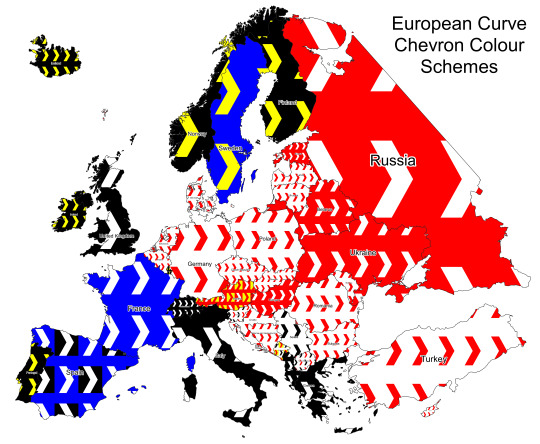
Map of European Road Curve Chevron Signs
by u/isaacSW
Not sure if something like this has been done before but I’ve put together a map showing the colour schemes used on the chevron signs used on road curves throughout Europe (this is the sort of thing I’m talking about). I think it could be quite powerful in some areas, like the Balkans and central Europe, where they are quite common and the colours vary a lot from country to country.
This won’t be 100% accurate, and I’m sure you will be able to find counterexamples, but I have checked multiple signs in each country and it appears to be a fairly reliable clue. If you do find anything I’ve missed, let me know and I will update the map and post the link below. Here is a list of observations I’ve made while making this map, with example locations.
Notes:
The white colour is often substituted for luminous green/yellow in high altitude/latitude areas (example). Austria and Montenegro have their yellow variants shown on the map as they appear to greatly outnumber the corresponding white variants. The yellow colour on south-facing signs will often fade to near-white.
Some countries will add a luminous yellow outline to the signs rather than replacing the white (generally in high altitude/latitude areas). Some countries that do this are: Italy, Romania, Hungary, Russia, the UK, Belgium and Turkey.
Most countries will also have a long variant of the curve chevron sign (example). This should be the same colour scheme as the single-chevron signs, however it may be less obvious which is the ‘background’ and which is the ‘chevron’ colour.
Notable Countries:
Spain uses both the white-on-blue and white-on-black interchangeably. It is always the long variant (as far as I can tell), and the colour distribution does not seem to vary by geographic location. (blue example, black example)
Montenegro uses the red-on-yellow (example) and black-on-white (example) signs in roughly equal amounts (no real correlation with geography), with some lower areas near the coast using the red-on-white variant (example), however this is much less common than the red-on-yellow.
Slovenia uses mainly the black-on-white variant (example), however areas around Ljubljana and Koper (and maybe other areas) use the red-on-white variant (example).
Austria uses the red-on-yellow and white-on-red frequently in the upland areas. They are also often found with a pattern of a few reds then a yellow (example), which appears to be unique to the country. The lowland areas may also use the red-on-white variant.
The Netherlands often uses a miniature variant (example)
Russia and Ukraine use the long variant quite frequently, which also sometimes appears in the Baltics (possibly other ex-soviet regions too). The single variant also has more background colour visible compared to other countries (example). It also often has a white outline.
North Macedonia has red-on-white and black-on-white variants, though the black ones appear to be less common.
Frequency:
Countries that use a lot of roadside bollards tend to use fewer curve chevron signs.
Rare in Andorra, Finland and Denmark.
Fairly uncommon in: Baltics, Sweden, Iceland, Russia, Ukraine, Belgium, Netherlands, Germany and Luxembourg.
Fairly common in: Norway, UK/Ireland, Spain, Portugal, France, Italy, Switzerland, Hungary, Romania, Serbia, Czechia, Slovakia, Poland, and flatter areas of the Balkans.
Very common in: the Austrian Alps, mountainous areas of the Balkans, and Turkey.
78 notes
·
View notes
Photo

1387 03 11 Castagnaro, the Veronese breakthrough - Graham Turner
As the Veronese carry the ditch, the Paduan line starts to crack in the face of superior numbers. The scene depicts this dramatic moment of the battle. Ostasio da Polenta, leads the Veronese assault, the crested great-helm he wears over a bascinet a visible rallying point for his men. At his left are the German knight Georg von Schonberg and the Veronese Ugolino dal Verme. Schonberg is clad in a Central-European coat with long, loose sleeves and wears a bascinet with a klappvisor, somewhat demodee in Italy but still popular north of the Alps. Dal Verme's armour is a combination of up-to-date and earlier pieces, his family's fortune taking-off once again after years of exile from Verona. Coming up behind Polenta is the feudal lord Antonio da Castelbarco leading a group of his own retainers, the latter's mixture of older and newer equipment denoting different degrees of individual wealth. The banner of Giovanni degli Ordelaffi indicates that the Veronese left flank has by now moved towards the centre of the line, adding weight to the attempted breakthrough.
On the Paduan side, Francesco Novello da Carrara desperately tries to stem the mounting Veronese tide. As would be expected from a member of one of the most powerful Italian families, his apparel is the best on the market. From contemporary sources we know he wore a crested bascinet rather than Polenta's great helm, but carries the same bouche style of shield, a shape that was becoming increasingly popular in Italy. At Francesco Novello's side a member of his household moves in to protect his lord, his role and position evident from the variant of the Carrara arms on his jupon. Also guarding Francesco Novello, this anonymous Paduan man-at-arms, whose state-of-the-art breastplate has caused him to forgo his jupon, although one could expect him to have some sort of field sign painted on his armour for the sake of recognition. The Paduan trumpeter sports the Carrara arms on the small flag hanging from his instrument, but otherwise wears normal civilian clothes.
20 notes
·
View notes
Text
The Desert Fox: Separating the myth and the man of Field Marshal Erwin Rommel

Sweat saves blood, blood saves lives, and brains saves both.
- Field Marshal Erwin Rommel
War hero or Nazi villain? Field Marshal Erwin Rommel is, to this day, the subject of heated debate. He was the “Desert Fox,” revered by Allied Forces for his supposed chivalry, and allegedly implicated in the “Valkyrie” plot to assassinate Hitler.
But present day historians have increasingly come to re-examine the life and the legend of this most iconic of World War Two generals.
I first became interested in this question after reading Corelli Barnett’s magisterial account ‘The Desert Generals’ back when I was in Sandhurst. I read other World War Two books before then of course but it was only at Sandhurst did I first give serious consideration towards Rommel as ‘the Good German’ general. I read other books too like General Sir David Fraser’s ‘Knight’s Cross: a life of Field Marshal Rommel’ as a stand out one on military stuff but a very cursory examination of his early life and beliefs.
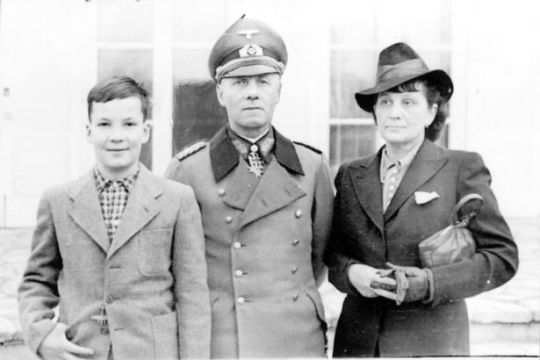
Rommel was a legend in the making.
Whichever side of the debate one falls on there is no doubt that Erwin Rommel, was one of the most celebrated and respected generals of the Second World War and indeed, some even say one of the greatest generals of all time. His prowess on the battlefield earned him more than a battlefield earned him the admiration of both his men and his enemies alike, with adversaries lining up to pay tribute to their greatest foe in the field.
“We have a very daring and skilful opponent against us, and, may I say across the havoc of war, a great general,” said no less than Winston Churchill himself of Rommel, just after the war ended in his book on the conflict, The Second World War.
When Churchill came under fire in the press for praising a man seen as a Nazi, he doubled down, commenting “He also deserves our respect because, although a loyal German soldier, he came to hate Hitler and all his works, and took part in the conspiracy to rescue Germany by displacing the maniac and tyrant.
For this, Rommel paid the forfeit of his life. In the sombre wars of modern democracy, chivalry finds no place… Still, I do not regret or retract the tribute I paid to Rommel, unfashionable though it was judged.”
Indeed, the extent to which Rommel was a Nazi is one of the great questions that has been asked since the war and one that is debated to this day. Rommel, while respected by those who fought him from afar as generals and indeed, thought of a genius to many of those who fought beneath him in the Wehrmacht, has often faced criticism of his tactics and his decision making, with some post-war writers holding him up as a man prone to erratic behaviour on the battlefield and a great sufferer from the stresses of the job.
“Rommel was jumpy, wanted to do everything at once, then lost interest. Rommel was my superior in command in Normandy. I cannot say Rommel wasn’t a good general. When successful, he was good; during reverses, he became depressed,” said Sepp Dietrich, who fought under Rommel in France and ended the war as the most senior figure in the Waffen-SS.
A similar sentiment was expressed by Luftwaffe field marshal Albert Kesselring, a contemporary of Rommel’s and an officer of similar rank, who later wrote: “He was the best leader of fast-moving troops but only up to army level. Above that level it was too much for him. Rommel was given too much responsibility. He was a good commander for a corps of army but he was too moody, too changeable. One moment he would be enthusiastic, next moment depressed.”
Who was this great man then? We know him today as a great tactician, a charismatic leader, a respected general and the last German participant in the so-called “clean war”. But how true are those assessments? Was the Desert Fox as chivalrous as his enemies thought him to be?
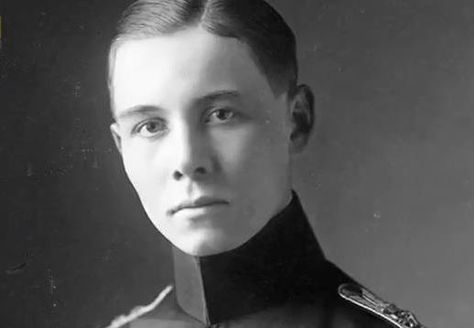
Rommel was far from just a Second World War hero – he distinguished himself in World War One too.
Rommel graduated from the military academy in Gdansk – then known as Danzig and an integral part of Germany – in 1912 and was immediately posted back to his home region of Baden-Württemberg.
When war broke out in 1914, Rommel was ready to face his first major conflict posting. As a battery commander within the 124th division of the German army, he would distinguish himself and gain his first recognition from the higher-ups.
Erwin saw his first action at the age of 23 on August 22, 1914, near the French town of Verdun. Rommel led his platoon into a French garrison, catching them by surprise and personally leading the charge ahead of the rest of his men, earning credits for bravery and ingenuity. He would be awarded the Iron Cross, Second Class, for his actions, a promotion to First Lieutenant and a transfer into the Royal Württemberg Mounted Battalion as a company – rather than platoon – commander.
Rommel would go on to fight in the German campaigns in Italy and Romania, with particular note being taken by the German Army hierarchy of his conduct in the Italian campaign. The Royal Württemberg Mounted Battalion fought at the Battle of Caporetto, the twelfth battle to be fought along the Isonzo River in modern-day Slovenia, and one that would go down as probably the largest military defeat in the history of Italy.
Rommel would play a central role, leading the Royal Württemberg, with just 150 men, to capture an estimated 9,000 Italians, complete with all their guns, for a cost of just 6 of his own men.
The young Rommel used the challenging, mountainous terrain of Caporetto – now known as Kobarid – to outflank the Italians and convince them that they were totally encircled by Germans, when in fact there was just one battalion. Fearing that they were surrounded, the Italians surrendered en masse and were surprised to find that so few men were able to capture them.
The efforts of the German Army to break into the Italian Front through the Slovenian Alps – at the time, part of Italy – were vital in furthering an advance towards Venice, though the Germans were eventually stopped and turned back.
Rommel was awarded the Pour Le Merite award by the Kaiser for his leadership at Caporetto, but also gained the respect and loyalty of his men, who were not only impressed by the way in which his tactics had won the battle, but also by the way that he had stood up to the German Army high command and argued for more and better food for his men. The legend of Rommel was growing apace.

Rommel was an effective teacher as well as a military leader.
It shouldn’t be too surprising that Rommel was a capable teacher: his father had been a headmaster, while the ability to communicate his ideas effectively in the field would lead to some of his most enduring military victories. There was no point coming up with a revolutionary tactic to win a battle if you couldn’t then inform and inspire your men well enough for them to then go and carry it out.
At the end of the First World War, Rommel was entering his late 20s and had already been widely feted for his military prowess. While it might have seemed a little dull compared to the derring-do on the Isonzo, the role of the Royal Württenberg Mountain Battalion lay much closer to home, with German society slowly disintegrating into civil wars between, on the left, socialists who wanted Germany to undergo a revolution similar to that which had recently occurred in Russia, and on the right, groups such as the Freikorps, disgruntled ex-soldiers and nationalist, anti-communist paramilitaries that would go on to form the kernel of the Nazi Party.
Rommel, recently promoted again to the rank of Captain, was ordered to use his soldiers in a policing capacity, putting down insurrections all over southern Germany. It was during this period that he showed some of the sense of restraint that would distinguish his conduct in North Africa during World War Two, trying to avoid the use of force against crowds of civilians where possible.
After the Weimar Republic took hold, however, the country somewhat stabilised and Rommel found himself in Dresden, teaching new recruits. He had been promoted in turn to Major, then Lieutenant Colonel, placing him in the very highest echelons of the Treaty of Versailles-reduced German Army.
He was recognised as one of the prime instructors in that army and wrote a book, “Infantry Attacks”, that furthered his theories on warfare and explained his experiences in the Izonzo – it sold incredibly well and increased Rommel’s personal fame, as well as bringing him to the attention of Adolf Hitler, who was known to have read the book.
Rommel met Hitler in Goslar, Germany in 1934, while Rommel was posted as battalion commander. Hitler’s charisma and promises to reestablish Germany as a world power after the crippling results of World War I inspired Rommel to become a fervent supporter of the Nazi Party.
The two men had several encounters following this, and Rommel rose through the ranks on Hitler’s personal recommendation. But it was ultimately Hitler’s liking for Rommel’s book Infantry Attacks that led to his becoming the commander of Hitler’s personal guards during his tour of the Sudetenland.
By the 1930s with Hitler fully secured in power, the German Army, for whom Rommel worked, and the Nazi state were more and more inseparable. It would be this coming together that prompted a major dilemma for the career soldiers such as Rommel: did the duty lie to their country, and whoever might be governing it, or to the party, that was coming to define what that country was about?
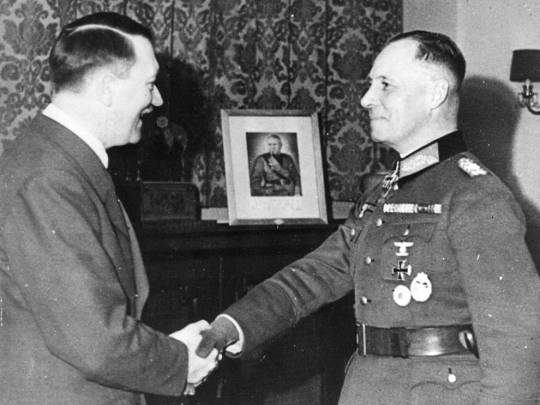
Rommel was a committed Nazi and not the “decent face” of the German Army.
Rommel’s antagonism wasn’t so much against Nazism as it was towards the Nazis in leadership who led it. His committment to Nazism eroded as the war took a wrong turn and as Hitler increasingly became erratic in his military decision making that Rommel grew increasingly frustrated.
Just how much of a Nazi Rommel was is one of the biggest questions that is debated about him to this day. It is largely due to the Rommel myth that was perpetuated by the likes of Winston Churchill after the war that Rommel was taken by the victorious Allies as “the good Nazi”, or the honest general who happened to be being ordered about by the Nazis, merely a career soldier who followed orders and stayed out of politics.
Let’s put that one to bed, here and now. Rommel was an early adopter of the Nazi Party and a committed believer in the ideals of National Socialism, while also being an officer who regularly disobeyed orders – making both commonly held assumptions wrong.
That said, he is one of the few figures of that period who is still revered in Germany, who still has streets named after him and memorials in his honour. It seems that the myth persists in his homeland too, despite countless books and articles to the contrary.
One such author attempting to shake this idea from the public consciousness is Wolfgang Proske, a historian and history professor from Rommel’s hometown on Heidenheim, who has written 16 books about his town’s most famous son. “Rommel was a deeply convinced Nazi and, contrary to popular opinion, he was also an anti-Semite. It is not only the Germans who have fallen into the trap of believing that Rommel was chivalrous. The British have been convinced by these stories as well,” he told British newspaper The Independent in 2011 when a new memorial to the Field Marshal was unveiled.
“At the time when Rommel marched into Tripoli, more than a quarter of the city’s population were Jews,” Proske continued, “There is evidence which shows that Rommel forbad his troops to buy anything from Jewish traders. Later on, he used the Jews as slave laborers. Some of them were even used as so-called ‘mine dogs’ who were ordered to walk over minefields ahead of his advancing troops.”
While Rommel was never a member of the Nazi Party, it is widely known that Wehrmacht figures, particularly high-ranking ones such as Rommel, welcomed Hitler coming to power. Those, like Rommel, whose backgrounds had shut them off from the highest ranks of the Kaiser’s forces, saw the new government as one that would see them move to the top of the tree and as such were generally in favor of it.
Goebbels himself wrote in 1942, when Rommel was in the running for the role of Commander-in-Chief of the Wehrmacht, that the Field Marshal was ”ideologically sound, is not just sympathetic to the National Socialists. He is a National Socialist; he is a troop leader with a gift for improvisation, personally courageous and extraordinarily inventive. These are the kinds of soldiers we need.”

Rommel owes a large part of his fame to the fact that he made fools of opposing general - well almost (Patton would disagree).
Rommel’s prowess as a general is unquestioned. On the back of his heroics as a low-level officer in World War One added to by his role teaching at the forefront of modern military tactics, he was perfectly positioned to lead the Nazi war machine into the second conflict.
When the war began, he was leading Hitler’s personal protection battalion – so much for a man who kept a distance from the center of Nazi power – and thus was privy to the highest levels of discussions regarding tactics, particularly the way in which to use mechanized infantry such as tanks. After the early successes in Poland, Rommel moved with the front to France and commanded Panzer units, before distinguishing himself against the British at Arras and leading the drive towards Dunkirk.
With the British regrouping on the other side of the Channel after a crushing defeat – which, lest we forget, Dunkirk was – the focus turned to North Africa, where Rommel would lead the newly-established Afrika Korps. He was the superstar of the German Army, a reputation largely built on his ability to vanquish the British, whom he would now face again in the desert. It was at this time that his nickname, The Desert Fox, was coined by the British press, who sought to create a figure against which the war could be fought.
The legacy of Rommel as the acceptable Nazi could be seen to stem from this point when the media in Britain saw fit to create a worthy adversary for their troops to combat. Rommel was thought to be an old-style soldier rather than an out-and-out Nazi: though we have seen that he was a Nazi, and he had arguably committed war crimes by summarily executing prisoners in France just weeks before.
Come the victory of the British at Tobruk and El Alamein, the British propaganda machine had even more than a noble adversary. They had a noble adversary against whom they had lost in Europe and then subsequently defeated: when the characters of the British side, Auchinleck and Montgomery, were spoken of, they needed someone of equal weight to make their victories seem even more heroic, a role that fit Rommel perfectly.
With morale at home low after the Dunkirk evacuation, the victories in North Africa were vital to keeping spirits up, and a glorious victory against an equally glorious enemy sounded even better. Churchill himself called Rommel an “extraordinary bold and clever opponent” and a “great field commander” in the House of Commons in 1942 – after he had just been defeated.
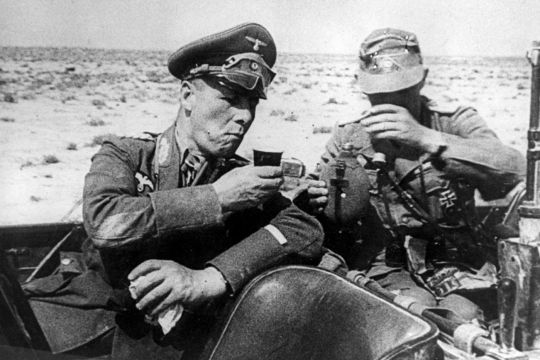
Rommel’s reputation for chivalry in North Africa might not just be down to his own intentions.
Of course, some aspects the Allied propaganda about Rommel – that he was a fair fighter, that he respected the ideals of chivalry when other Germans didn’t – were generally true.
It is undoubted that, by and large, Rommel adhered to the rules of war when plenty of Nazi generals didn’t, but it bears mentioning that the reason that so many German generals were so callous is that they were ordered to be like that. Orders within the Nazi war machine came down from high and were often brutal in their nature: summary execution of prisoners, rounding up of Jews and other minorities, scorched earth policies. That was just the orders aimed at enemies: often generals would be ordered to stand their ground to the death when all military logic told them to make a tactical retreat.
Rommel’s dedication to upholding the “war without hate” as he called the more traditional methods of war is up for debate, but certainly, he did take measure to negate the harsher aspects. That said, there are other factors that question whether his commitment to the “war without hate” was intentional, circumstantial or ideologically-driven.
When most German generals were likely to commit acts of ethnic cleansing, Rommel was not generally faced with the question. North Africa, where this reputation was developed, had hardly any Jews, for example, and other potential targets for Nazi aggression were protected by being citizens of Italy and Rommel was wary of standing on the toes of their allies. That said, many within the North African Jewish community are reported as having felt that they were spared from the horrors suffered by Jews in Europe by the actions of the Afrika Korps, led by Rommel.
It is also widely accepted that he refused to execute captured Jewish prisoners and hated the use of slave labour. As far as his own troops were concerned, Rommel repeatedly refused orders directly from Hitler. When, at the end of the second Battle of El Alamein, Hitler commanded him directly not to retreat and to show his soldiers “no other road than that to victory or death.”
Knowing that it was impossible for him to defeat the advancing British, who massively outnumbered his forces, Rommel chose to ignore the letter from the Fuhrer and fled all the way across North Africa to Tunisia rather than face death in the sand. While he was way too politically powerful to be censured by Hitler, actions such as this were contributory to a wider feeling among the Nazi hierarchy that Rommel was not one of them.

He was a PR superstar in Germany, but was both respected and later suspected by the Nazi leadership.
Rommel’s reputation within Germany might well have made him untouchable for the Nazi hierarchy, even when he did things that were in direct contradiction of the ideological and military strategy of the regime. They had invested so much time and so much weight in making him the poster boy of their propaganda regime that, when Rommel turned out to be less than what they had hoped for, they could not easily dispose of him.
On paper, he was the perfect fit for their media machine: he was an early adopter of Nazism, already a hero from the First World War and an excellent general, with victories aplenty. Moreover, they could cite the Allies reverence for him in their favor, and Rommel himself was comfortable in the spotlight and relished the attention.
Hitler was always wary of building up any one single figure too far – lest he be challenged himself – but Goebbels, the chief propagandist, knew an opportunity when he saw it and Rommel could not be passed up. As Rommel’s media image grew and grew, he became the darling of the public back home, but in the corridors of power in Berlin, there were plenty of higher-ups who were less convinced of his powers.
Even from the early days of the war in 1941, when Rommel was in France, some of those who fought alongside him were doubting just how effective he actually was a general. By the time that the war in North Africa had turned against him in 1943, the German furthest expansions were contracting: the Battle of Stalingrad had been lost in February and Rommel departed Tunisia in May.
It might have made sense if the Nazis had thought Rommel their best general, to send him to the Eastern Front where the war was being lost. Perhaps, too, the brutal nature of the war on the Ostfront was seen as beyond Rommel’s nature: this was not the time or place for “war without hate”, in the eyes of the Nazi leadership.
Instead, he was dispatched to Italy. As Italy fell, Rommel was demoted from the head of the campaign to second in command to Albert Kesselring, alongside whom he had served throughout the North Africa campaigns.
Later in France, Rommel was the man in charge of building the Atlantic Wall that would protect Nazi-occupied France from Allied invasion: though he had warned heavily that his experiences in North Africa had taught him that land and sea defences would be nothing if air supremacy allowed the Allies to destroy the Nazi army from above, Rommel was ignored.
After the defeat in North Africa, the retreat through Greece and Italy and the failure to stop the D-Day invasions, his reputation as a superstar general back home was in tatters.
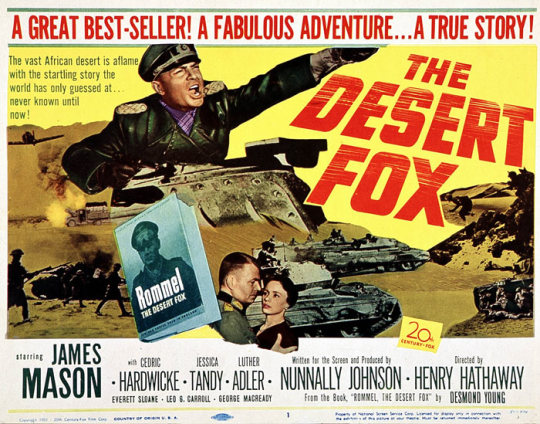
Rommel’s reputation got a huge boost because of a 1951 film.
If Rommel’s reputation as a great leader was undermined by the catastrophic defeats on the African, Italian and Western Fronts in the last two years of the war, why was it that the so-called “Rommel Myth” was so pervasive after the war? The theories are numerous, but one major contributing factor must be the success of the 1951 film, The Desert Fox. Rommel was played by the iconic actor James Mason who won critical acclaim for his role.
Rommel was a well-known figure in Allied countries and in 1950, the first biography of the “good German” was released in the UK. Written by Desmond Young, a British brigadier-general who had himself been captured by Rommel during the war, “Rommel: The Desert Fox” was incredibly popular in Britain and cemented the position of the vanquished general as the acceptable enemy.
His later involvement in the 1944 plot against Hitler did a lot to wash Rommel of the stain of Nazism – conveniently forgetting the decade or so that he had spent close to the top of the regime – and his position as the general who was beaten “fair and square” endeared him to a British audience. After all, it’s much easier to build heroes of your own generals when they have beaten a general that you also respect.
The 1951 film of The Desert Fox further spread the myth and was widely popular in the UK. The narrative of Rommel, the good German, being defeated by the heroic British in the clean war in North Africa was a far more palatable one in the burgeoning Cold War than one that emphasised the horrible destruction that had come through the Soviet victory in the East.
There could be little appetite for a war with Russia when people were constantly being reminded of the horrific images that had emerged from the Eastern Front. Thus, the clean general of the fair fight in North Africa was an enticing idea.
The Germans, too, were all too pleased to go along with Rommel as their figurehead. Their army had been severely curtailed after their defeat, but there was a clamour to de-Nazify the Wehrmacht and remove the stigma from the German armed forces. The Bundeswehr, the new German army, was more palatable to a post-war world when it could be seen as the legacy of good soldiers lead by bad politicians rather than an integral and vital part of the Nazi war machine.
Thus, the idea of The Desert Fox was created and, to a large extent, still persists. He remains the only Nazi to be lionised within Germany: public squares and streets bear his name, as does the largest barracks of the Bundeswehr. Whether such a status is deserved, however, is still a question about which historians continue to argue.
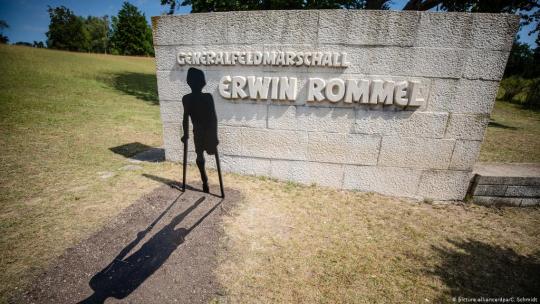
During the first half of 2020 many countries have been reconsidering the roles of their historical figures - remembered in statue form - due to their controversial views or actions from today’s point of view. In Britain, France and Belgium, statues of figures associated with the colonial past have become the target of public criticism in some quarters. In the United States, not only statues of Confederate figures who defended slavery during the American Civil War were destroyed or even demolished, but also, for example, the discoverer of America, Christopher Columbus.
In Germany a similar process was also underway. The monument to the Wehrmacht Marshal Erwin Rommel in Heidenheim came under severe renewed scrutiny.
Germany's memorial to Field Marshal Erwin Rommel is perched on a hillside overlooking the middle-class town of Heidenheim an der Brenz where he was born 120 years ago. The words inscribed on the white limestone monument describe the legendary Second World War general as "chivalrous", "brave" and as a "victim of tyranny"
The monument, which was built in 1961 by the German Afrikakorps Association, aroused long-term controversy and in the past was repeatedly damaged by inscriptions that called Rommel a Nazi. In 2014, Heidenheim City Hall expressed its intention to contrast the monument with another memorial building. By 2020 those calls took on a greater momentum.
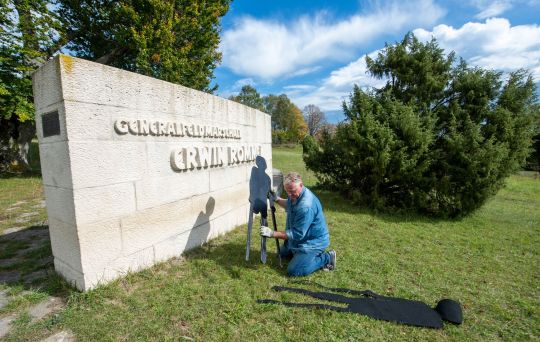
The German artist Rainer Jooss was brought in by the municipal authorities to re-interpret the existing monument without having to destroy it completely. Jooss took as his starting point to focus on other parts of Rommel’s legacy. It was little known that Rommel had large minefields laid during the campaign of German troops in North Africa during World War II. In Libya and Tunisia alone, at least 3,300 people have lost their legs and another 7,500 have been maimed since the statistics were kept in the 1980s. So Jooss designed black silhouette cut out of a maimed child victim of war to complement the monument.
“The monument does not represent the truth, but encourages us to look for it,” said Bernhard Ilg, Mayor of Baden-Württemberg, at the presentation of the monument’s design unveiling in July 2020. Jooss was more stoic. Joos believed it would be a mistake to remove the Rommel monument altogether,"If we let grass grow over it, that would mean the end of the important task of dealing with history.”
The artist behind the modification to the Heidenheim monument said his statue was purposefully made to look small next to the impressive limestone bloc."I wanted to confront the monumental (features) of the original memorial with the fragility of a land mine victim.” Jooss wanted and hoped that it was up to “the next generations to make a picture of themselves based on factual histography.”

Yet eminent historians have since dismissed the fresh silhouette plaque as a transparent attempt to avoid addressing the deep seated questions about Rommel. Indeed Rommel’s privileged position to being seen as the ideal role model for the Bundeswehr (the unified armed forces of Germany and their civil administration and procurement authorities). While recognising his great talents as a commander, they point out several problems: such as Rommel's involvement with a criminal regime and his political naivete. However, there are also many supporters of the continued commemoration of Rommel by the Bundeswehr, and there remains military buildings and streets named after him and portraits of him displayed.
The politician scientist Ralph Rotte called for his replacement with Manfred von Richthofen. Historian Cornelia Hecht opined that whatever judgement history will pass on Rommel – who was the idol of World War II as well as the integration figure of the post-war Republic – it was now the time in which the Bundeswehr should rely on its own history and tradition, and not any Wehrmacht commander. Jürgen Heiducoff, a retired Bundeswehr officer, had written that the maintenance of the Rommel barracks' names and the definition of Rommel as a German resistance fighter are capitulation before neo-Nazi tendencies. Heiducoff agreed with Bundeswehr generals that Rommel was one of the greatest strategists and tacticians, both in theory and practice, and a victim of contemporary jealous colleagues, but argued that such a talent for aggressive, destructive warfare was not a suitable model for the Bundeswehr, a primarily defensive army. Heiducoff criticised those Bundeswehr generals for pressuring the Federal Ministry of Defence into making decisions in favour of the man who they openly admire.
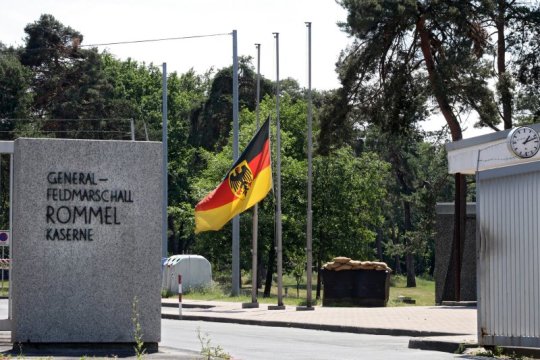
Rommel has had his supporters from this avalanche of revisionist criticism. Historian Michael Wolffsohn supported the Ministry of Defense's decision to continue recognition of Rommel, although he thought the focus should be put on the later stage of Rommel's life, when he began thinking more seriously about war and politics, and broke with the regime. Mitteldeutscher Rundfunk (MDR) reported that, "Wolffsohn declares the Bundeswehr wants to have politically thoughtful, responsible officers from the beginning, thus a tradition of 'swashbuckler' and 'humane rogue' is not intended".
According to authors like Ulrich vom Hagen and Sandra Mass though, the Bundeswehr (as well as NATO) deliberately endorses the ideas of chivalrous warfare and apolitical soldiering associated with Rommel. At a German Ministry conference soliciting input on the matter, Dutch general Ton van Loon advised the German Ministry that, although there can be historical abuses hidden under the guise of military tradition, tradition is still essential for the esprit de corps, and part of that tradition should be the leadership and achievements of Rommel. Historian Christian Hartmann opined that not only Rommel's legacy was worthy of tradition but the Bundeswehr "urgently needs to become more Rommel".
There are other historians who have tried to take a middle path on the continued controversy of Rommel’s legacy. Historian Johannes Hürter believed that instead of being the symbol for an alternative Germany, Rommel should be the symbol for the willingness of the military elites to become instrumentalised by the Nazi authorities. As for whether he can be treated as a military role model, Hürter writes that each soldier can decide on that matter for themselves. Historian Ernst Piper argued that it was totally conceivable that the Resistance saw Rommel as someone with whom they could build a new Germany. According to Piper though, Rommel was a loyal national socialist without crime rather than a democrat, thus unsuitable to hold a central place among role models, although he should be integrated as a major military leader.
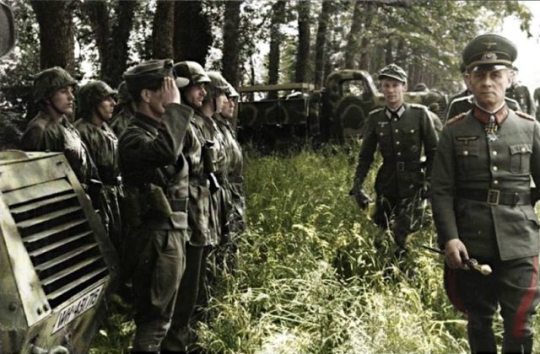
Whether one is for and against Rommel such debates take place because he is dead in conveniently ambiguous circumstances.
Recovering from skull fractures in hospital, he missed the main event - the 20 July Bomb Plot 1944 - insitigated by other senior German army officers. Hitler survived the blast, and immediately set about executing the plotters.
While Rommel had lots of contact with many key conspirators and was generally aware of the movement(s) to assassinate Hitler, there is no direct evidence that he knew about the July 20th plot in advance, let alone was involved in any detailed planning. Several conspirators allegedly confessed during interrogation that he was involved and, like Speer, his name was found on Goerdeler’s list of possible participants in a new German government.
Rommel was listed among various possibilities for Reich President. Unfortunately for him, there was no question mark or other notation, as in Speer’s case, which indicated that he was unaware of the designation.
He maintained his innocence when confronted by General Burgdorff on the day he died and also told his wife and son that he had played no part in the events of July 20th. But ultimately, there’s no way to know what he was or was not aware of. He took that with him to the grave.
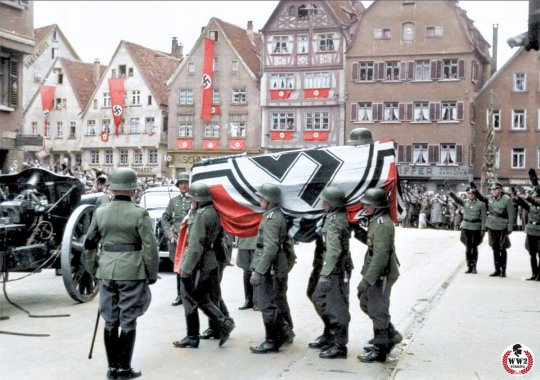
The list of members of the 20 July plot doesn´t name Rommel as part of the attempt to kill Adolf Hitler. But: Rommel was blamed of having known of plans to do so. So he was forced to commit suicide.
On 19 th October 1944 Rommel met two german generals at his home. They showed him pretended evidence about his paticipation in “operation valkyrie”, which he denied to be true. They accompanied him away from his home, where he swallowed a capsule filled with potassium cyanide and died. The two generals Wilhelm Burgdorf and Ernst Maisel , members of german court of military honour, who had handed over the capsule to Rommel, drove back to his home and contended that Rommel had died because of ramifications of an injury he received on 17th of July during an allied bombardement.
Given a choice between a trial, involving his disgrace, execution and his family’s impoverishment - and suicide - he chose the latter.
The story given to the public was that he’d died of wounds sustained in the air attack. He was named a “german hero”, was “honoured” with a state funeral an d buried in Herrlingen, Germany.
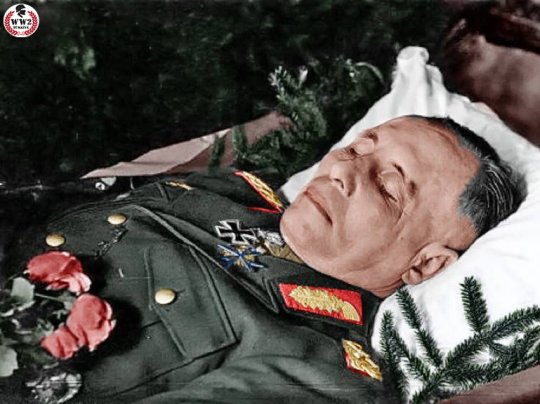
Had he lived who knows what his real fate might have been at the hands of the Allies. At the main Nuremberg trials, the two army generals prosecuted were Field Marshal Wilhelm Keitel and General Alfred Jodl. Both were accused of conspiracy to commit crimes against peace; planning, initiating and waging wars of aggression; war crimes; and crimes against humanity. Both were convicted on all four charges and hanged.
The principal charge against Keitel was the infamous 13 May 1941 Barbarossa Decree, which condemned captured prisoners and ensured a high level of brutality by German soldiers against Soviet civilians. Jodl was the author of the Commando decree – ordering that any Allied commandos encountered in Europe and Africa should be killed immediately without trial, even if in proper uniforms or if they attempted to surrender.
General Heinz Guderian is an example of a prominent German general who did survive the war but was not prosecuted for war crimes.
Another prominent example is Field Marshall Kesselring, who had commanded the defence of Italy after the Allies invaded. Kesselring was not prosecuted at Nuremburg, but did face a British military court in Italy. The Moscow declaration of October 1943 had stated that those accused of war crimes would be prosecuted in the country where they had committed their crimes. Although the trial was conducted in Italy, Italian judges did not participate as Italy was not considered an ally. Kesselring was prosecuted for the shooting of hundreds of Italian prisoners in retaliation for attacks on German soldiers. Kesselring was found guilty and condemned to death. British General Alexander, who had run the Italian campaign, and Winston Churchill pleaded for the sentence to be commuted - which it was. Kesselring was released in 1952 and lived until 1970.
By comparison Rommel was never accused of issuing similar decrees. Many felt that he was an honourable soldier. Nor was he ever accused of shooting prisoners in the way Kesselring was. Rommel’s military reputation is that of a highly professional soldier who carried out his duties according to a military code of ethics. His record is untainted by atrocities or unsavoury tactics against the enemy or civilian populations. He tended to live a charmed life early in the war.

Had he lived one can only speculate as to his fate and his legacy. Speculation regarding a possible role for him in the rebuilding of German forces for NATO, had he survived, is unrealistic. Rommel was never a strategically-minded commander. Indeed it is well known that Quartermasters hated him for his habit of outrunning his supplies on the battlefield.
The likelihood is he might well have been allowed to live without any kind of Allied retribution for war crimes as he was never guilty of any such departures from a strict military code of behaviour. But in trial - he would surely would have been put on trial even if he would be found not guilty - the messy details of his involvement with the Nazi regime would come to light. It would show that Rommel certainly benefited from the regime he served, and I think would have been considered guilty by association, even if his enthusiasm for Hitler waned in his final days.
Post-war, it would not have surprised me at all if the Allies had sought to build a West German government around Rommel. Staunchly anti-Communist, he nevertheless was seen widely as honourable and pro-West. But what role he would have been given - or what role the allies might have been able to make palatable to a war ravaged population - can only be speculated.
I suspect he would have served in some official capacity within the Bundeswehr before retiring to write his highly expected memoirs. It’s telling that Rommel’s chief of staff, Hans Speidel, drove the creation of the Bundeswehr and was the first to be named a generaloberst in that force. Later he was Supreme Commander of all NATO ground forces in Central Europe (which was almost all of it). It’s an intriguiing thought what Rommel might have played in a post-war Cold War Germany and Europe. Speidel and Rommel were inseparable and cut from the same bolt of cloth. Indeed it was Hans Speidel, who had been involved in the July 20 plot, wrote after the war that Rommel was a member of the resistance, (for which there is no evidence) that contributed towards Rommel and ‘The Good German’ Myth.
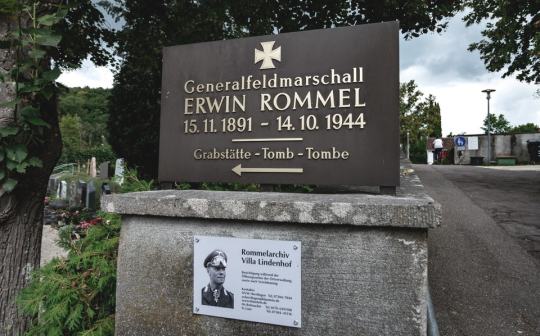
Given all that was “overlooked” by both the Allies and the German people after World War Two. There’s no logical reason to think that Rommel would not have been as honoured, if not more so, after the war. After all, one of the main Bundeswehr barracks continues to be named after him in 1965.
To me he was a great general rightly lauded by his peers and military historians - but not the best. Rommel was a highly competent tactical commander, but there were many such commanders in the Wehrmacht. His prominence is due to a number of things. Firstly, he was always Hitler favourite; secondly Goebbels played him up in his propaganda; and thirdly he fought the British and Americans and thus received much more attention in the Western press and historians after the War than the German commanders fighting the Soviets.
Indeed an argument can be made that by fighting in the Western Desert in a sector that the British had logistical and material superiority (and thus difficult to defeat), Rommel essentially taught the British and the Americans Blitzkrieg tactics - essentially modern warfare. His very inflated legacy saved the British from admitting their military performance in North Africa was abysmal until the Axis forces overextended their supply lines and the American supply of goods was able to compensate for substandard British equipment.
It’s also forgotten that Rommel also oversaw the building of Hitler’s Atlantic Wall which was essentially a fiction when he took over. Immense resources were poured into the project. The impact was to delay the Anglo-Americn invasion about 5 hours and only on one beach (Omaha).

And no matter how humane and honourable he was, Rommel was ultimately a weak man who chose to look away when it was convenient to his career to do so. Indeed I agree with many historians today that he was primarily bent on serving Hitler to advance his career. He was a man who believed he was serving a king and realises too late that he was a devil. I have little doubt that he was conflicted by that especially as it grew during the seven months of his life leading up to his death. Perhaps the best tactical military manoeuvre he made was to take the poison forced upon him and thereby save his family but also secure his legacy, even if that legacy remains mostly intact if a little more tarnished to this day.
#rommel#nazism#nazi#german history#war#second world war#battle#soldier#general#erwin rommel#allies#germany#afrikacorps#statues#culture#society#history#military#military history
70 notes
·
View notes
Text
Reading a thread about “Who is the stranger you saw only once but still think about sometimes?” and it’s fucking me up and has got me thinking...
The woman about my age (in 2004; 22) who I saw crying silently on the London Underground and I didn’t say anything to (and now wish I had). That James Blunt song “You’re Beautiful” got popular the next year and it reminded me of her every time it came on the radio.
The Chinese merchant mariner and his wife who I met on the train to Venice (Italy) who was worried about getting off at the correct stop (we all helped with that) and who let me practice my (very bad) Mandarin with him for a minute. I remember how he smiled and laughed, but was so patient with me.
The university student from Bologna who saw me sitting on a wall, sketching some of the buildings in Perugia who asked if I was an artist. I said no; wish I’d said yes.
The woman who called the bookstore I was working in desperate to figure out how to get herself and her mother on the Dr. Phil show so they could work out their issues (she kept me on the phone for at least an hour).
The woman with the amazing bottle-green eyes I saw once while working at the same bookstore.
The woman with the blazing orange hair (dreads, I think?) who I saw in Grand Central Station station and I swear I saw her in a dream the night before.
The homeless man in Zurich with his pack of dogs who kept right around him (and one street over were watches being sold for hundreds of thousands of dollars).
The whole crowd of Australian students talking to a whole crowd of Japanese students, with the Japanese student’s teacher translating, all of which was going on during a Thames ferry ride.
The random student who helped me find the cemetery in Zurich so I could visit James Joyce’s grave.
The two guys some classmates and I met when we (randomly and unexpectedly) went to see John Paul II do the Stations of the Cross. They spoke Spanish, we spoke English, but we had enough French between us to get along.
The girl who was the British clone of my college roommate who I saw in a hostel in St. Gallen (CH). Right down to mannerisms and hair color. Just like her--except British rather than Texan. (Shout out to the cows hanging out around that hostel.)
The MP who was handing out Pro-EU lapel pins to all the tourists regardless of nationality in Westminster--a good 15 years before Brexit was a real Thing. I still have that pin.
The guy selling panini on the train out of Florence. He had the strangest kind of Donald Duck robot voice as he walked the aisles saying “Panini. Panini. Panini.”
This one is cheating because I saw him twice, but I met a man from out on the coast of NC who was (by his own admission) part black and part Native American. He had the palest blue eyes I have ever seen and six fingers on each hand--which, he said, meant he should be the leader of his tribe. I was working at the genealogy library at the time and helped him find census records.
And, last but not least, the tabby cat I met in the Swiss Alps, just above Gimmelwald, who led me back down to Walter’s Hotel when I was a bit lost. Yes, the Rescue Cats of Gimmelwald are real.
A lot of these, ironically, come from that really shitty backpacking trip I took in 2004. Huh. I’ve got more, I’m sure. They spring up unbidden.
Anyway, feel free to add on your own, if you’d like.
13 notes
·
View notes
Text
Shelling out Can Be Lucrative With Real Estate in Slovenia
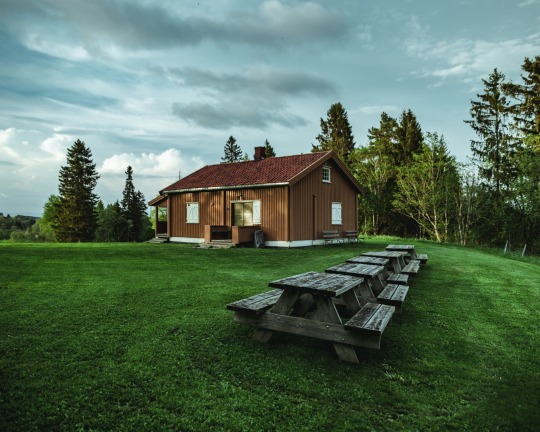
Very few ındividuals are aware that investments in Slovenia are much more cost-effective, compared to investing the same amount in the United States or the United Kingdom. Slovenia property investments have potential for higher returns on your hard-earned lifetime savings than other markets. With the guidance of any professional experienced in Slovenian markets, you would be able to experience the opportunities existing in Slovenia for maximizing your rewards. When you mention property investment in overseas markets, the original reception is usually skeptical. When you take this topic farther by saying that investments in Slovenia are more worthwhile compared to the property market in California, you are most likely in order to shock most of the people. For example , if you say that you had bought the housing property in Slovenia for $500, 000, the comments would most probably be, "Slovenia? Is it a place or a country? I have never heard of it", "Don't you believe buying a house in Slovenia is a risky affair? ", and "I am convinced that you are not acting in a intelligent manner. " Some of the comments could be even harsher. On the other hand, if you state that you have invested $1, 000, 000 in a waterfront property in a remote area in Los angeles, people would unanimously agree that you had made a great option. In reality, which of the above two investments is riskier? How to decide whether property investment in new international markets like Slovenia is riskier or safer as compared with an investment in native California? Slovenia Economy It will be true that many real estate investors in various countries had neither of the two heard of Slovenia or the opportunities that this little recognized neighbor of Italy offers in the property field. Slovenia joined the European Union in 2004 and recently adopted dollar as its currency. It would be interesting to know that Slovenia possesses the highest per capita GDP in the Central The world region, according to the CIA World Factbook. Further, the national infrastructure of this country is one of the best and the workforce is also rather well-educated. Like most global countries, properties appreciated significantly in between 2004 and 2007. However , the worldwide recession following the bursting of the real estate bubble in the middle of 2008 in the United States afflicted Slovenia also to a certain extent. Still, the country had managed to recover and is now on the growth path again. The actual GDP growth rate is around 5%, the highest for any new member state of the European Union. Slovenia Real Estate Market Data released by your Statistical Office of Republic of Slovenia (SORS) talk about that property values rose at an annual common of 1. 3% between 2004 and 2007 but been reduced after that. During the first quarter of 2009, the prices in houses on sale in second-hand market dropped by 7% from the same period in 2008, while the fall for real terms was at 8. 7%. The real residence prices in the capital city of Ljubljana collapsed through 8% in nominal terms and 9. 6% during real terms, while the decline was 6. 8% throughout nominal terms and 8. 5% in real words and phrases in the rest of the country during the first quarter of 09. This had brought down property prices, which is an excellent negative point but a positive factor. You could buy components at lower rates right now. Investment Opportunities in Slovenian Properties The biggest assets of Slovenia are its valleys blooming with vineyards, the breathtaking coastlines, the arctic peaks of Alps and the rolling hills, the numerous waterways, and beautiful waterfalls. These features had made Slovenia a major tourist attraction, with possibilities for rental real estate thriving financially. At the same time, the slump in property character and the possibility of significant appreciation in this decade make this place a prime location for real estate investment. After the setback regarding 2008, the Slovenian economy had been recovering at a faster rate compared with several other European and North American nations. A recent survey voted Slovenia among the top 10 countries offering best opportunities through real estate investment. According to the survey, the growth rate of place values in Slovenia are forecast to increase at the astonishing rate of 284% on an average, between 2010 and 2020. The annual rate of real estate rate growth is estimated at 30% at present. As such, expenditure of money in real estate of Slovenia is considered as a long-term, reliable and solid proposition. Do you know that you would be able to buy a very few hectares of prime land covered with vineyards as well as having a medium-sized 2-bedroom house for a low price of 70, 000 euros or about $100, 000? The helpful fact is that nearly 40% of Slovenia has area covered with vineyards and it is a major wine-producing nation. Sometimes the properties in major cities of Slovenia, which includes Ljubljana and Maribor cost only around 1, 500 to 3, 000 euros or $1, 800 to make sure you $3, 600 per square meter. Procedures of Investment decision in Slovenia Real Estate Apart from the several registered real estate providers in Slovenia, the local laws explicitly permit people out of your United States and European Union to buy properties in Slovenia with very little restriction. It would take about a month to complete all the thank you's required to buy a property. With certain stipulations, you could also utilize financing and mortgaging options but it is advisable for you to finance your purchases out of your own resources, if you want to capitalize on the returns on your investment. Conclusion It is obvious which a property investment in Slovenia is likely to be more profitable in the form of long-term venture when compared to the same amount being invested in the usa or other countries in the European Union, where the economic development rate is still sluggish. The present growth of Slovenia offers better returns in this decade than any real estate investment on these countries. As such, it could be safely concluded that your investment decision in Slovenian real estate would prove to be more profitable than a similar investment in several other countries right now and much much less riskier.
1 note
·
View note
Text
Istria Croatia
It was Harvest time, when I was invited to join dear friends and excellent winemakers from Friuli, the Butussi family, on a visit to some family in Istria.. Istria forms the western-most peninsula of Croatia. We started off in an area that is so often compared to Tuscany, Momjan and its soft rolling hills, Cypress trees and gorgeous oak forests are certainly reminiscent of the Tuscany I know and love. Istria is famed for it’s tourism offer with charming seaside towns and hilltop villages, the region produces notable wines, olive oils and truffles along with abundant fresh seafood and I was lucky enough to taste all of these on day one. The area is also famed for its outdoor adventures, sailing, paragliding, mountain-biking which draws many visitors to this beautiful region.
Some Geography
The geographical features of Istria include the Učka mountain ridge, which is the highest portion of the Ćićarija mountain range; the rivers Dragonja, Mirna, Pazinčica, and Raša; and the Lim bay and valley. Istria lies in three countries: Croatia, Slovenia and Italy. The largest portion (89%) lies in Croatia. "Croatian Istria" is divided into two counties, the larger being Istria County in western Croatia. Important towns in Istria County include Pula/Pola, Poreč/Parenzo, Rovinj/Rovigno, Pazin/Pisino, Labin/Albona, Umag/Umago, Motovun/Montona, Buzet/Pinguente, and Buje/Buie. Smaller towns in Istria County include Višnjan, Roč, and Hum.
The northwestern part of Istria lies in Slovenia: it is known as Slovenia Istria and includes the coastal municipalities of Piran/Pirano, Izola/Isolaand Koper/Capodistria, and the Karstic municipality.
North of Slovenian Istria, there is a tiny portion of the peninsula that lies in Italy, This smallest portion of Istria consists of the comunesof Muggia and San Dorligo della Valle, with Santa Croce (Trieste) lying farthest to the north.
Central Istria (Pazin) has a continental climate
The northern (Slovenian and Italian) coast of Istria (Ankaran, Koper, Izola, Muggia) has a sub-Mediterranean climate.
The western and southern coast (Piran, Portorož, Novigrad, Rovinj, Pula) has a mediterranean climate
The eastern coast (Rabac, Labin, Opatija) has a sub-Mediterranean climate with oceanic influences.
The warmest places are Pula and Rovinj while the coldest is Pazin
Precipitation is moderate, with between 640 and 1,020 mm (25 and 40 in) falling in the coastal areas, and up to 1,500 mm (60 in) in the hills.
Winemaking
The four princes of Istrian wine are:
Teran a tannic, robust red with high acidity that has surprising complexity.
Borgonja
The ancient grape famed beyond Croatian borders, Malvazija ,which Istria is justifiably proud of. Grown here for centuries, its pale golden yellow colour with elderflower on the nose and a refreshing aroma.
Then the sweet Muscat from Momjan used for those dessert wines.
Most of the larger estates also cultivate international varieties such as Chardonnay Cabernet Sauvignon, merlot and Cabernet Franc for their wine range.
Our first stop was at Winemakers the Markezic family, who have been making unique terroir wines here since 1891, at Kabola Winery at Momjan on the Istrian wine route. Their property is a dream with ancient sprawling oaks around the property that stand guard over the traditional stone homestead, featuring an excellent cellar, the wine shop, tasting room, and a small museum dedicated to wine and wine making process. Rolling hills with vineyards 270m above sea level, nestled between indigenous forests.
Kabola Winery use amphorae buried underground for fermenting the Malvaziaj wine. The perfect combination of soil, climate and winemaking passion. Wonderful hospitality and there were so many amazing wines, from sparkling whites to muscley reds and right through to orange wines. I took away their excellent Amfora Malvazija 2009 wine. An excellent start to my trip in Istria.
The Momjan area makes for an excellent vantage point, on a clear day you can see both the glistening Adriatic Sea and the nearby alps. Cool nights and distant sea breezes make for some really delicious wines.
For Winery visits. Kanedolo 90, Momjan Buje t: +385 99 7207 106. [email protected] Closed on Sundays.
Close by is the charming winery-centered village of Brtonigla where I was staying over for a few days to explore the area. The local boutique hotel is of a high standard and all the winemakers have a relationship with it., making my job of tasting all the wines I wanted to experience but didn’t have time to visit, a lot easier.
Second visit was to Veralda a large modern winery with a substantial production, 33 hectares of vineyards and 5 hectates of olives located on the sunny hills of Buje, that is sent all over Croatia. Owned by the Visintin family the wines are well known in the region Here I tasted the whole range including the intense reds and was fortunate to be invited by the winemaker’s family to join them for a fresh truffle pasta freshly prepared with the fortunate pairing of the Veralda Rose which was a Decanter winner of which the winery was justifiably proud. Notable was the red Istrian made from the indigenous Istrian variety Refosco. Intense deep red colour with violet hints with raspberries, dark chocolate tobacco and cinnamon with a good expression of round, velvety tannins and long finish.
For Winery visits, Krsin 4, 52474 Brtoniglia
The Kozlovic winery located in stunning scenery in Buje with a unique architectural style to the modern winery, is a well-known winery with a tradition of making unique wines that stand for quality and the particular twist of Istrian wines. Later Over dinner, we sampled their flagship Malvazija and the excellent Teran. Paired with local fish and steak respectively.
For Winery visits: Vale Momjan 78 52460 Buje
Day three saw me visit a Long-standing family winefarm and winery, Cattunar near Brtoniglia . The Cattunar family have been flying the flag for Istrian wine where Father Franko and his son, with the hospitality assistance of their wives and extended family, run an excellent winery and offer regular tastings of their wines of autotonous grapes also and international varieties in an elevated position 5kms from the sea. I tasted my way through their wines looking out over the 56 hectares they farm carefully and with transparence. Istrian grapes like Malvazija, Teran, Muskat Momjanski and Muscat rose and also have substantial international vineyards.
Catunnar Wines.. here its hard to choose but certainly the standouts were the 4 soils Malvazija wines, each one grown on different parcels and vinified separately so the red soil, the white, the black, the grey each with a particular something, all so very drinkable, with a mineral quality and white flower finish but so fresh and vivid with layers of complexity.
Franko Cattunar also makes a lovely sparkling with his chardonnay which we started on and then lead up to the stunning multi-layered Teran with its nicely firm but integrated tannins and then Cabernet and also beautifully made Merlot, which was a surprise.
This visit to Cattunar was a highlight and as I sat later that evening in the sailboat dock in the nearby town of Novigrad with my feet in the gently lapping waves watching the sunset with an array of local wines and a few orange wines on offer, I knew I had only scratched the surface and that I would be back to explore more of this amazing place and its unique terroir wines.
For winery visits: Nova Vas 94 52474 Brtonigla [email protected]
Recommended visits.
Roxanich winery in Motovun are pioneers in the unfiltered, unadulterated long-macerated wine scene, Mladen Roxanich was producing natural local wines and orange wines long before it was trendy and each year at Raw in London I made sure to visit them. The Super Istrian 2009 is simply amazing.
Bruno Trapan is the new generation of winemakers in a style all their own, and making big waves along with Damjanic wines. Robi Damjanic near Porec is one of Istria’s youngest winemakers leading the charge into the future. Then Matosevic and his pioneering aging of Malvazija in acacia rather than oak. I can’t give an exhaustive list of the superstars and their stories, but these must be visited.
Dobravac Winery in the Rovinj region they produce a range of wines again from sparkling to dessert wines.
Near Umag in the north CUJ wines are produced by the Kraljevic family in the village of Farnazine.
Pilato’s winemaking tradition goes back to 1934 and the family winery in Istria is well known.
Degrassi produces some amazing wines too and I was surprised by the blend of Malvazija, chardonnay , sauvignon blanc and Viognier.
These are some, there are many others.
Novigrad, Rovinj and even the smaller towns all have numerous wine bars where you can stop over and taste the wines paired with local cold cuts and cheeses. There is also so much for the taster’s family to do, shopping in fascinating cobblestone towns and villages, layers and layers of interesting wine and food culture. On offer, is sailing, windsurfing, fishing, boating, and relaxing on beaches with refreshing and delicious chilled wines and seafood at hand. The third weekend in September is the festival of grapes in Buje.
The Istrian peninsula and those unicorn wines call me back.
Donna Amanda Jackson
4 notes
·
View notes
Text
Day 13-14: Veneto>Trieste, Trieste>Senj
1,187 miles completed, 900 or so to go...two new countries 🇸🇮🇭🇷
Greetings from Senj, Croatia 😊
WHAT THE HELL do Croatians put in their Lemon Ice Tea? If I got 3 hours sleep last night I’d be exaggerating. But that it’s my go to energy drink for cycling here, it bodes well for an excellent ride 😊 The last time I felt this wired, well, too long. The likely explanation is the E numbers in the supposed healthier option of iced tea; equally, I’ve just cycled through a country, crossing it’s border silently, just a sign to say I was approaching Slovenia, and 250 metres later, boom: no control, cars, only a change of tarmac, once grey and flat, now pale and cracked.

I assumed the control point was further on up the mountain; surrounded by lush forests and rolling hills, void of life other than the apparent chorus of feathered natives. The sun hadn’t fully appeared and the weather could go either way, leaving me rather focused on the option of getting over the top and in to Croatia quickly. The final peak on the route is around 900m, but even my luggage felt lighter than any other climb I’d done this trip. Rolling on, I eventually hit a border control believing this was Slovenia, and for the first time, I was asked for my passport by a guard who came out and met me, and taught me that “Vala” was thank you. None the wiser that I had crossed into Croatia, my bike, Monkey II and it’s younger sibling, my frame bag, rolled on, blissfully alone. I’d realised that Spotify had moved into the next week and the deepest joy, a new Discover Weekly playlist. Artificial intelligence is very clever. In the tunes it presented me this week, first on the list, Crazy by Seal, Moving by Supergrass. I couldn’t be more elated on a ride than I felt in those two hours. I was in my own private heaven.
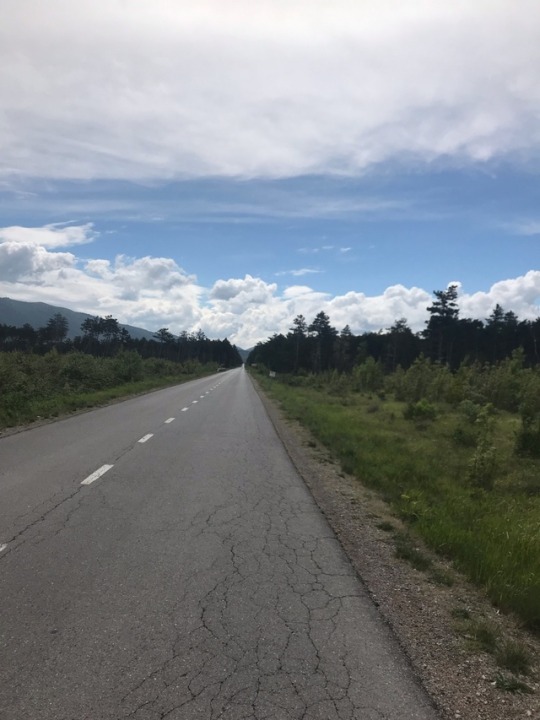
Not until I stopped for cappuccino at Cafe Bicicletta did I realise it was the Croatian border I crossed. I should have realised passing through Rejika, a crumbing, graffiti, once grand port city, interlaced with tram lines and an intricate network of roads. I looked very alien, and the city people looked very different to those I had seen in Trieste, just 20 miles ago and a country away. I didn’t know until I paid for my drinks that Croatia, whilst in the EU, has its own currency, the Kuna. I’d bought a roll, and at what I believed was €2.70 for a bit of bread, I was getting the “tourist” rate, the lady corrected me, taking my euro coins, all 50c, and putting me out of my confusion.
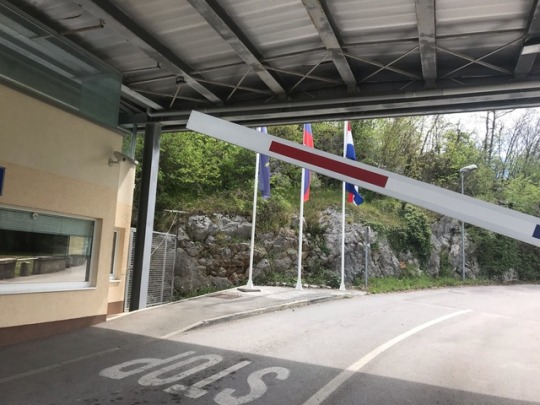
1000m climbed and 40 miles to go, the landscape again changed dramatically. Forested mountains to my left, the Adriatic and stark, barren, sometimes silhouetted landscapes to my right. It was beautiful, the route, challengingly hilly, and still the heavy clouds followed me, reminding me to keep pedalling or risk a soaking. I realised at this point my chain had developed a new rub in the big ring. It’s quite disheartening to hear...so small ring most of the remaining miles the answer.
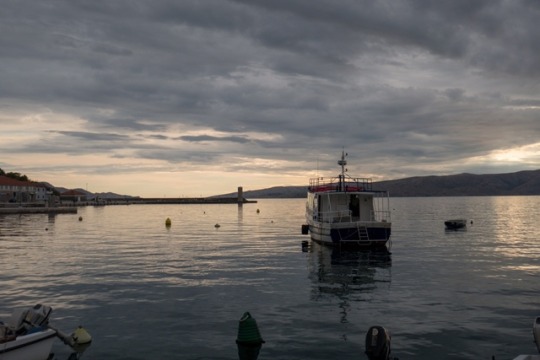
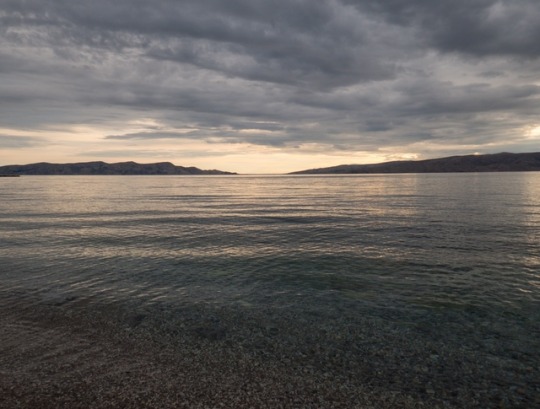
I have a habit of unknowingly booking my bed at the highest point in a town. The accommodations in Senj was just this, with a 30% wrong turn to finish and 2200 climbing metres for the day, finally arrived, meeting the friendliest hosts of my trip, immaculate studio apartment, a freshly made tea, overlooking the ancient town and it’s proud castle. My goodness, I had arrived. It started to feel like the Odyssey had been to get to this Dalmatian Coastline. Inclement weather across Italy behind me, now I could breathe. If I hadn’t already felt challenged, it was now I was going to find out what I am made of.
Looking back at Italy, whilst I love Italy, I had not loved this particular visit. I’d got unlucky with the low weather front that arrived as I reached the Alps, and is still with me, but hopefully passing. I could have left later in the year. But if I felt the roads were busy now, in two months, they’d be so much worse.
I hit my low points in Italy (assuming there will be no more). I had to force a rest day after Venice, huddling down in a closed petrol station deciding how long I could survive as I chilled to the bone, sheltering from the freezing wind and wet to the core despite my wet weather gear. After finding the nearest hotel, and then waking the next day to the same torrential rain and 4 degrees, my heart was truly deflated. There was only one thing for it. Improvise. Adapt. Overcome. It was drastic, but the ridiculousness of the necessity to dress up as a cycling clown weirdly raises my spirits. The hotel owner, Rosa, and her husband, who called himself Leonardo (da Vinci) after helping to craft my stapled bin liner dress to go with my ingenious shower cap helmet/head saver, joined in laughing at my insistence at my intention to at least start again rather than get a train, or another friend’s suggestion, a ferry. All great options. Only to me that felt like failure. By 10 I was on the road with gritted teeth and an unbreaking resolve to make it to Trieste.
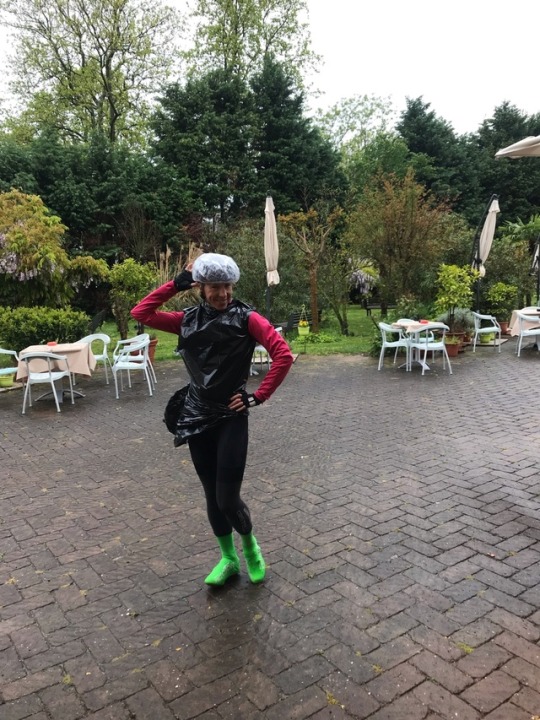
Looking left, I could see the Dolomites like a northern wall, covered in snow to the lower levels, a constant reminder of how messed up my trip would have been if I’d gone with any intial plan to ride through Trento. Surprisingly, the rain abated somewhat by the time I reached the Italian Rice Fields, wetlands with more water networks than I’ve ever seen and an abundance of wetland birds of all shapes and sizes. I had no nutrition for this 5 hour ride. I’d didn’t stop. And at 3:10pm, I arrived, victorious in the Italian Riviera town of Trieste. I really liked it here. My room was great, central, and vibrant atmosphere all around. I made my four yearly visit to McDonald’s to get a hot chocolate (amazing in Italy! Last time I was in McDonald’s was also a cycling trip in Italy in 2016, where starving and desperate after a long hard ride and all of Italy closed for lunch, I ordered 9 chicken nuggets, 6 chicken wings, a side salad, and fries, and ashamedly, enjoyed and demolished them all 😆). Knowing that a tough day lay ahead, I found my local bike mechanic to give my bike a mini service and at 10am I hit the road in search of new countries.

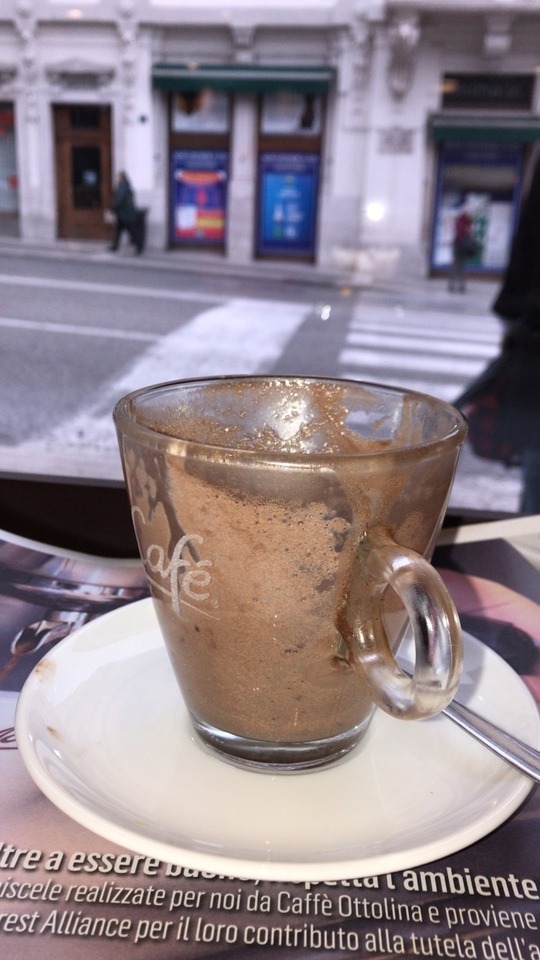
A few friends knowing what I’m doing, cycling from home to somewhere in Greece, ask am I having fun. This is my 6th cycling adventure, and in my head, an adventure won’t always be fun. Sometimes it won’t be fun at all, from beginning to end. Some adventures will be a combination of fun and he’ll, and the hope is that the trip will be more fun than arduous. The thing is, when it’s a good day, it’s amazing. There are incredible moments, desperate days, and varying degrees of pain and pleasure. But I think is good to take the risk and see what happens. At no point during or after an adventure have I said “I wish I hadn’t done it”. Even travelling alone and carting your own gear, riding 6 hours a day or more in all weather, you take yourself both mentally and physically to places otherwise unreachable, creating heightened memories and teaching you things about yourself, revealing your weaknesses and discovering strengths. I wasn’t sure I’d have a knee strong enough to make this trip. But here I am, over half way, excited, happy, weary but ready for another day. And when all is said and done, it’s still only a trip around a supermarket car park compared to those that climb mountains or sail across oceans. I have so many options to get home. On my hardest day this trip, I was sat within 5 miles of an international airport (Marco Polo), a train station (could have got me to Trieste) and a ferry terminal (anywhere between Trieste, Dalmatian Coastline and Athens).
I still have my cycling t shirt casual evening attire. I wear it now almost to excuse myself for my scruffy appearance. As if to say “no need to ask. Yup. Cyclist. Solo. Smelly. Weird”. I’ve also not managed to shed my wet weather gear yet but it’s coming. I can feel it! 😊
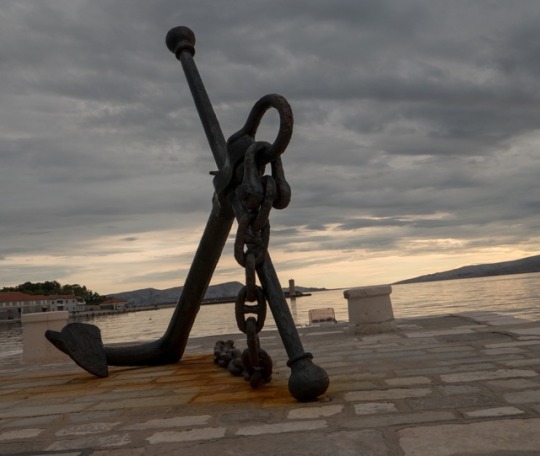
3 notes
·
View notes
Text
The History and Meaning of Celtic Design & Art

by Crimsonwolf
Celtic art and culture date back as far as the 8th century B.C. Until recently, much was unknown about this fascinating culture. But thanks to recent archaeological excavation and findings, a greater understand of the Celtic people has been developed. Tribes were bound together by speech, customs, and religion, rather than a centralized government. Because of this, the art of the culture contained specific designs for spiritual meaning.
Celtic Knotwork is probably the best known style of Celtic design. The intertwined patterns of never-ending lines appealed to the Celts, symbolizing their ideas of eternal life and the intricate relationship of humanity with both the divine and the natural worlds.
Celtic denotes a people who are descended from one of the current seven Celtic "fringe" provinces of W. Europe- Brittany, Cornwall, Galicia, Ireland, Isle of Man, Scotland and Wales. The Celts did not live as a single organized nation, and are difficult to pin down to one specific way of life.
The Celts lived in the centuries around the birth of Christ . The oldest remnants of Celtic culture can be found close to Eastern France, N. Italy, S. Germany, Belgium, N. Switzerland, Austria, Turkey and Spain. The word CELT itself was derived from the name Keltoi, given by the ancient Greeks to all those who lived north of the Alps.
The Celts were not a people for writing things down. They passed down their traditions and their history by word of mouth and later in their artwork and symbolism. Celtic symbolism explains how they felt about the universe, life, death and the result of the changing seasons, so important to people who lived off the land. Celtic Symbolism reflects the human spirit, the ambitions and desires, aspirations and fears, and beliefs of the "otherworld" of fellow humans two thousand years ago.
Celtic Crosses
Symbolize the bridge to the "other world" or "worlds" and also to higher energy and knowledge. This is shown by the vertical axis which represents the celestial world, and the horizontal axis that symbolizes Earthly world. Celtic Crosses are also considered solar symbols and the source of light and ultimate energy. The first Celtic crosses had four equal points representing the four directions (north, south, east and west), and the four elements (earth. air, fire and water) and were enclosed by a circle that represented the sun. It may be noted that these early crosses were also used to mark holy spots in pre-Christian times and are often associated with the Tree of Life.
The Spiral
Symbolizes the continuity of life and spiritual growth. It is the constant flow of nature's processes moving outward then back inward as Heaven and Earth are joined. It is also about how death is a rebirth, whether of a human life, the seasons of the year, the astrological skies or anything in the natural or supernatural world The spiral was found on many Dolmans and gravesites. Its true meaning is not known for sure, but many of these symbols were found as far as Ireland and France. It is believed to represent the travel from the inner life to the outer soul or higher spirit forms; the concept of growth, expansion, and cosmic energy, depending on the culture in which it is used.
To the ancient inhabitants of Ireland, the spiral was used to represent their sun.The spiral is the cosmic symbol for the natural form of growth; a symbol of eternal life, reminding us of the flow and movement of the cosmos. The whorls are continuous creation and dissolution of the world; the passages between the spirals symbolized the divisions between life, death, and rebirth. Another idea states that the loosely wound anti-clockwise spiral represent the large summer sun and the tightly wound, clockwise spiral their shrinking winter sun. Also a double spiral is used to represent the equinoxes, when day and night are of equal length.
The Cauldron Symbol or the Three Spirals
Represent the Maiden, Mother and Crone aspect of the Goddess. The Cauldron is under the power of the Earth goddess Ceredwen the goddess of transformation. Transformation or Shapeshifting was an integral part of Celtic belief, this symbol is found all over Celtic artifacts. In the Cauldron, divine knowledge and inspiration are brewed.
Celtic Triangle Knot or Triquetra Knot
Triquetra - this three-pronged knot may symbolize the Celtic philosophy that everything has 3 distinct yet interlocked levels - physical, mental and spiritual. When the Celts embraced Christainity they used this symbol to represent the Trinity. Inspired by the 9th century illuminated Gospels of Lindisfarne, each triquetra (triangle) is constructed of one line to represented strength and give protection to the wearer.
Triple Spiral
This structure is called the spiral of life and was found in the remnants of an old temple from the Bronze Age in Ireland.An ancient symbol found at the core of Celtic belief , the triple spiral was used consistently in Celtic art for 3000 years. The Celts believed that all life moved in eternal cycles, regenerating at each point. Celts also believed that all important things came in three phases such as birth, death and rebirth and also mind, body and spirit. The triple spiral later became the Triskele used in Christian manuscripts. The triple spiral is also used to represent the triple goddess and triple god. My personal favorite symbol of the feminine cycle of life- Maiden, Mother, Crone.
Tuim Knot
Interweaving knotwork said to represent the four seasons the four seasonal lunar holidays, and the four elements earth, air, fire, and water
Serpent and Dragons
The dragon represents change, the necessity that we not only adapt to circumstance but we ourselves become the active agent of change.Ancient Celts believed the fiery breath of the Green Dragon would give new life Dragons are the combination of the forces of the depths. The serpent, the wings of a bird, and horns, represent regeneration and grown. The dragon is the gatekeeper to other worlds.
The "Tree of Life"
This is an ancient philosophy common to many cultures and mythologies. Often regarded as an all-nourishing, all giving Mother, many myths speak of the Tree of Life or World Tree as involved in the creation of the universe. Britain was once covered by mightly oak forests, and tree reverence is a major feature within Celtic religion. Trees reflect a link between the upper and lower worlds. The Ancients envisioned the entire cosmos in the form of a tree whose roots grow deep into the underground, its branches reaching high into the heavens and sky. Druids had their teaching centers in the midst of Oak groves, and the words for wood and wisdom are similar (Welsh gwydd and gwyddon).
The Celtic Tree of Life is one of the most popular and enduring motifs of Celtic Art, found both on Northumbrian and Celtic crosses and on illuminated manuscripts. Portrayed variously as the Golden Bough, vine, or mistletoe.
The ancient Celts envisioned the cosmos in form of a great tree. The roots were deep in the earth and branches stretched to the heavens. The Celtic Tree of Life is the symbol of balance between these worlds; the unification of above and below; a symbol of Balance and Harmony. It's branches and roots form a map of the cosmos wherein all things are interwoven and connected. Many Celtic Tree of Life designs emerge from a pot. This pot symbolizes the Earth Mother from which all life springs.
Birds of Rhiannon
The Welsh Goddess Rhiannon was accompanied by magical birds whose enchanted songs could awaken the dead and lull the living to sleep.
The Horse - Sovereignty, Guidance
The horse was reverred by the Celts for its speed and sexual vigour. Epona and Macha are Celtic horse goddesses who watch over the land, protecting its abundance and insuring a good harvest. As protectors of nature, they both grant sovereignty over the land and are the goddesses of the stable. As goddesses of maternity, prophecy, and prosperity, they guide and protect mortals on their journeys through life.
Serpent - Earth Healer
Symbols of healing and wisdom, serpents live within the depths of the Earth Mother and have mastery of all her secret knowledge and vital forces. Both Brigantia and Stroni, Celtic goddesses of healing, use the serpent's mystical powers to work their cures. Because of their wave-like movements, serpents are also assoc-iated with healing waters and sacred wells, sources of the regenerative healing powers from within the earth, and thus are protectors of health and well-being. Coming from inside the Earth, the serpent was believed to be all knowing of the world's secrets and having divine wisdom. The ram-headed serpent is named Cerrunos, who is lord of the underworld, and king of all animals. Cerrunos is the symbol of strength and virility.
Birds - Spirits of Prophecy
Birds play a prominent role in Celtic myth and legend. As symbols of freedom and transcedence, they represent the human soul in flight, liberated from earthly ties, able to soar in spiritual communication with the heavens. Returning to earth, they bring messages of prophecy and guidance, aiding mortals on their spiritual and earthly journeys.
The Bull
Represnted divine power and strength. For the Druids it was a symbol for the sun and the procreativity associated with its forces.
Dogs or Hounds
Often seen with various gods & goddesses, the hounds may be a domestic guardian as well as a source of healing power.
https://crimsonwolfe.tripod.com/id55.html
0 notes
Text
Apfelhotel Torgglerhof in Val Passiria, Italy
Apfelhotel Torgglerhof Hotel, South Tyrol Modern Interior, Italian Architecture, Commercial Real Estate Photos
Apfelhotel Torgglerhof in Val Passiria, South Tyrol
30 Nov 2020
Apfelhotel Torgglerhof Resort Hotel Award
noa* are honored that their project Apfelhotel has been chosen as a finalist in the “Best of Year Awards 2020” of the Interior Design Magazine (NY) in the “Resort Hotel” category.
The winners will be announced online on the 9th of December, so keep your fingers crossed that our project will be selected as a winner. Check out the full shortlist here.
29 July 2020
Apfelhotel Torgglerhof Hotel
Design: noa*
Location: Val Passiria, South Tyrol, Italy
Apfelhotel Torgglerhof Hotel – In full bloom
As the age-old adage goes, the apple doesn’t fall far from the tree. In South Tyrol, Saltaus, Apfelhotel’s young new generation of owners are breaking new ground while staying true to their traditional roots. noa*’s novel design and architecture evokes the vintage charm of this historical hotel while creating an oasis for the senses and shared moments.
The apple, a fruit that originated in Kazakhstan and was brought to South Tyrol by the Romans, is central to the region’s cultural landscape. The Torgglerhof lies at the mouth of the Passeier Valley, its roots run deep in classic apple cultivation culture. Over time, it became a spot for people wanting to linger, connect, and soak up the scenic views. It’s here that the Apfelhotel (eng. Applehotel) was built, and it has since become both an outing destination and an insider tip for guests looking for a holiday treat and special getaway – with scrumptious architecture.
An Idea Takes Root In 2014, noa* won a design competition for expanding the hotel’s existing structure, which was implemented in several stages. In 2016, the main building with the restaurant as well as the old barn were dismantled and stripped back for conversion.
Behind the original façade of the barn, beneath the guest rooms, you’ll find Apfelhotel’s production of various delicacies from their home-grown apples as well as other local specialties. The Apfelsauna (eng. Applesauna) was completed as the first feature of a spacious wellness and relaxation landscape, which has now been expanded.
In 2020, 18 new suites were built for guests and carefully designed to fit into the farmyard’s landscape structure while complementing the rural surroundings. A special emphasis was placed on preserving the characteristic of the farmhouse ensemble and maintaining its scale.
As the central masterpiece of this rural development, noa* designed a wellness area with architecture and greenery that resemble a modern lush garden. A kind of “green heart” that, like the apple-shaped sauna, integrates smoothly and fully into the landscape.
Overflowing Love Of Life The newly opened wellness facility – the hotel’s new centrepiece – has no Northside facade, instead, it blends into a natural green slope so that the building can hardly be seen. The entrance to the new spa is a curved semi-exposed concrete shell that tucks into the landscape and is designed with a stunning portal made from old wood. Here, in the interface between the surface and subsurface, the word immersion takes on a meaning of its own.
The Southside of the wellness area, on the other hand, opens up with a glass and steel facade that vanishes underneath a blanket of rooftop greenery. The steel canopy, on which fragrant jasmine flowers will climb, protrudes upwards into the open sky, reminiscent of the holding structures used in modern apple cultivation.
Much of the Brunnenhaus, (eng. Water Well House), as the new wellness area is also called, is largely hidden from sight: the entire structure is covered with a layer of earth and plants, designed to blend naturally into the bottom of the hill and thus merge into the landscape. The spa boasts a central drinking fountain made from natural-stone and an open fireplace in a spacious lounge area, which leads onto the showers, changing rooms, and beauty and massage rooms.
The indoor-outdoor pool stretches out to the outdoors through the overgrown green façade and is partially framed with Lucerne metamorphic gneiss rock. The framing dissolves where the water edge meets the surrounding open space to visually connect with the landscape in an infinity edge.
The Garden Of Eve The upper floor is an area for adults only – it features a sauna lounge, relaxation room, and a Finnish sauna and steam bath and an adjacent terrace where guests can refresh with an outdoor shower. The Finnish sauna is a dream for the senses, with its horizontally curved wooden slats and generous glazed windows, it offers a scenic view of the outdoors and apple fields.
The steam bath has a cave-like character, with droplets collected in a clay pot due to the ceiling that inclines towards the room’s centre. The relaxation room offers a spectacular view of the valley through the greenery of its facade cladding. The Apfelsauna in the garden can be reached via a curved open staircase, which is flanked by the exposed concrete shell.
Flowering Places The new garden suites were constructed on the hotel’s East-facing side: three independent buildings with a total of 18 guest rooms across three floors. The saddle roofs absorb the architectural language of their surroundings and the façade blends tradition with modern aesthetics. The buildings’ outer shell has been deliberately kept dark in an ode to the traditional character of a barn house. Meanwhile, a wooden rhombus pattern – created as a transformation of classic wooden struts – gives the three buildings an unmistakably modern flair.
The suites on the ground floor blend into the topography. The entrance and adjacent bathroom are followed by a living and sleeping area which connects out onto the front terrace. Luxurious swinging hammocks with fluffy pillows, which are also seen in the wellness area, lend a relaxed, country flair.
Nature and the characteristics of the region play an important role in the interior design. Wood cladding, milling, and coarse natural fibres are used throughout the entire inner decor – the materials run like a thread through all the rooms. The airy terraces are separated with an outdoor linen curtain.
Everything But Oridinary On the ground and the first floor, there are four spacious guest rooms and two outer laying suites, which have a separate sleeping corner for children to play and sleep in. In the suites, the large windows offer a panoramic view of the idyllic landscape, and the feeling of living in and enjoying your own home.
The attic gables are perfectly utilized to accommodate a sleeping gallery. An internal staircase leads from the suites up to the galleries, where step-shaped furniture also offers storage space. In every room, a unique atmosphere is created by meticulous attention to detail in design – with elements such as the metal banister purpose-built to wonderfully combine aesthetics and function.
Continuation Of History If you bypass the old barn and the impressive 40-year-old weeping willow, you’ll arrive at the hotel’s main building – the place where everything started. The hotel’s restaurant, which in recent years has gained particular popularity by guests coming from near and far, has expanded to include pavilions that roll out onto the garden.
Two areas were created: closed, heated canopies, followed by open canopies with shading options grouped in clusters around a piazza of sorts. The grey-brown aluminium of the canopies is designed to harmonise with the warm grey floor tiles while contrasting with the main building’s plaster and wood.
Appetite For More The concept of the restaurant’s expansion design centres around the principle of three rooms or “cubes” with differing heights. The inner decor is based on the theme and mood of a modern winter garden: the ceiling offers a unique structure on which plants and lighting can be flexibly hung. The open space is divided by loose old-styled cupboards and floor-toceiling permeable shelves. These shelves function as a transparent room divider, a presentation area for the hotel’s self-made products and as a library stocked with literature on culinary arts.
These features create a cosy and inviting living room atmosphere. A natural spring water fountain allows for a refreshing drink. And as a unique highlight – there’s no classic buffet. Instead, guests are invited to tuck into treats displayed on an old planning bench, while in a séparée, a specially designed piece of furniture with fixed and mobile elements provides chilled and warm culinary delights, and can also be used for wine or food tastings. Even the tables and chairs in the light-flooded guest-rooms defy the usual stereotype, with a lively mixture of round and angular displays.
The entire Apfelhotel project reflects the nature and passion of its family-owners, whose aim is to make people feel truly at home, rather than like a hotel guest. Together with noa*, the architecture was created with a great sense of integrity towards this special place, which becomes a unit with nature, ties in with its history, and maintains its own identity through applied design – where occasionally, glimpses of the apple can be seen in the surrounding nature and design.
Apfelhotel Torgglerhof Hotel in South Tyrol – Building Information
Architects: noa* network of architecture
Typology: Hotel, wellness Location: Saltaus, St. Martin im Passeier (Italy) Client: Apfelhotel Torgglerhof, Family Pichler Interior Design: noa* network of architecture Construction start: November 2019 Completion: May 2020 Intervention: Construction of new wellness area & new guest rooms, Restaurant extension Volume: 12.000 m3 Surface area: 2.890 m2
Photographs: Alex Filz
Apfelhotel Torgglerhof in Val Passiria, Italy images / information received 290720
noa*
Location: Alpe di Siusi, South Tyrol, Northern Italy, central Europe
Italian Architecture
Italian Architecture Designs – chronological list
North Italian Hotel Buildings on e-architect:
Hotel Silena, Via Birchwald, Valles, Bolzano, Italy Design: noa* photograph : Alex Filz Hotel Silena in Vals
Hotel Valentinerhof Building, Kastelruth Design: noa* photo from architecture studio Hotel Valentinerhof Building
Rosa Alpina Hotel SPA Penthouse, Dolomites Architects: Vudafieri-Saverino Partner photography : Alex Filz Rosa Alpina Hotel SPA Penthouse
North Italian Building Designs
Italian Houses
South Tyrol House, Kaltern an der Weinstraße (Caldaro) South Tyrol, northern Italy Design: feld72, architects photo : David Schreyer South Tyrol Family Home
House at Muehlen In Taufers / Campo Tures, South Tyrol, northern Italy Design: Pedevilla Architects photograph © Pedevilla Architects / Photography by Gustav Willeit House at Mill Creek Muehlen In Taufers
Z House, Tarvisio, Udine, Italia, north east Italy Design: GEA Gri e Zucchi Architettura srl photo : Gianni Antoniali Z House in Tarvisio, Udine
Italian Architecture in major cities : news + key projects
Italian Buildings : Projects outwith major cities
Italian Architect
Comments / photos for the Apfelhotel Torgglerhof in Val Passiria, Italy – Northern Italy Architecture page welcome
Website: Val Passiria, Italy
The post Apfelhotel Torgglerhof in Val Passiria, Italy appeared first on e-architect.
0 notes
Video
youtube
ARROW THEORY HANNIBAL BITTER WORDS ABOUT THE LIFE OF A GIGANT AND A G...
HANNIBAL - BITTER WORDS ABOUT THE LIFE OF A GIGANT AND A GIANT.
HANNIBAL ante portas, or Hannibal without pants? Well-known And yet? How was this poison? Did they let him drink or did he get away like this? What is with the world when you contribute Hannibal to the power of the enemy and you want to destroy him? Where are you now Carthage? You're not . There is no . There is no!!! His legs were like the marshal's chestnut. The year was 218 before Christ was born. Hannibal marched through the Alps. Rome conquered lower and central Italy in 270 BC. In 500 BC, Rome declared itself a republic. Two hundred and fifty years earlier, in 753, Romulus was building a city. And here's another power. Carthage! And Hannibal. He was great. Elephants and monkey tails. Trumpets. Hate for Rome. It all contributed to Rome's power, rather than its fall. Hannibal fought against Rome until the end of his life.
Without removing them from his nose, he cleaned his glasses with the thongs of an unknown woman or other creature that he wanted to examine more closely.
It's unbelievable how much good eyesight can do. And yet the story got lost in the meanders of time, and maybe it wouldn't have been SO confused if people hadn't forgotten HOW meanders WORK. Hannibal didn't know it anymore.
At 63, he drank poison.
What do we know about butchered horses? In the door of the apartment, in the stairwell, Albie's skull was cut with a razor until the bone came out. The door was about to slam the pervert, but he managed to slam. We don't understand the stench of the sandals of Hannibal's soldiers. I can assure you that they have nothing to do with the sandalwood used in our wardrobes.
In the Battle of Cannami in some 200 BC (216 BC), the Romans were struck and their numbers were great. The Roman army numbered 260,000 people. How many is 260,000 people? That is one hundred times a thousand people doubled and sixty times a thousand people. This is over a quarter of a million !!!!! Fourth of a million! And ten thousand more to that. This is the same ten thousand, this little town is gossiping to heaven. And here are only so many men in fighting strength ??? What were they eating? What were they drinking? where and with whom does he sleep? How much did they earn ???? Before they were killed, and they thought they would win, because so many of them.
Hannibal had much less strength, which he nevertheless set up skillfully. Ingredient up to a million? It is known, after all, that the sillion is smaller than the cotillion. At the front he set up the main forces of the army and stood in the front line himself. Here he had to hold out until the hidden troops struck from the sides and the cavalry closed the cauldron from the back. The Romans attack will go frontal as predicted, so the most important thing is to withstand this attack. Taking the central position among the first line himself, he expressed how important this line is.
He knew an army is worth as much as a swollen first lip. The swelling of the first lip is marked by soldiers when they spread out across the line field wide and deep, building single duels, temporary redoubts and directions with their bodies. After all, it is impossible to fight strictly side by side, because no one will make any move. So not all fight at once. Ergo, so the number is not decisive here. Only after time does it let you know, displacing the tormented, wounded and weary of the fight with fresh soldiers. But what if the trap is closed sooner?
And Hannibal would close the trap properly in time.
The strategy was successful, and as the last Carthaginian troops began attacking the Roman legions from behind, the battle turned into a slaughter of the Romans and a Carthaginian victory. The 260,000 army was KILLED soldier by soldier. The smaller Carthaginian forces defeated the greater Roman forces !!! The Battle of Cannami was an unparalleled masterpiece of military strategy and tactics. To this day, he is an example, even after so many centuries and many technologies have changed. Two millennia have passed from that day until today!
But then it was time to go to Rome and finish off the defeated enemy. For this, larger troops were needed that could besiege and live far from their homeland. Hannibal, as the victorious commander, asked Carthage to organize a new expedition to defeat the hated Romans. However, his myopic homeland, Carthage, did not support him. He will pay for it later with his fall! Already in 14 years! Once in 202, and for good in 146 before Christ was born. Scipio escaped from the battlefield of Cannami and, after returning to Rome, began to prepare a new army. He understood that Hannibal's army was about to come upon Rome. A special senate decree and a doubling of the tax on war costs made the army grow. Anyone was admitted, and even criminals wishing to redeem their guilt were admitted to the legions after the amnesty was announced.
Special training as well as Scipio's experience meant that soon the Roman army in Spain recaptured city after city from the hands of the Carthaginians. Hannibal fought against Rome from the age of nine. He fought all his life, even when his homeland did not support him.
0 notes
Text
20 of the world’s most stylish dog-friendly hotels
The year of the pandemic has also been the year of puppy love, with more of us turning to our furry friends for comfort than perhaps ever before. Where would we be without our four-legged companions during lockdown (and life in general) to break up our working-from-home days with cuddles, chasing tails, and a much needed breath of fresh air on a lunch break outing.
If your daily ‘walkies’ are starting to feel a bit too familiar, why not swap the local park for one of these canine chic boutique hotels, where pups can expect to be pampered as much as any other guest. From doggy afternoon tea, V.I.Pooch packages, personalised bedding and dedicated dog room service menus, these paw-fect places are the pick of the luxury litter. Because your dog deserves a holiday as much as you do…
The Farncombe Estate, Cotswolds – UK

An eclectic village-style assortment of houses, huts and hideaways set within the picturesque grounds of the Farncombe Estate, The Fish Hotel barks up all the right trees (and treehouses). Welcoming medium sized, well behaved pooches to their cosy selection of dog-friendly rooms, which are located on the hillside and spread throughout various individual buildings in the grounds. Be sure to book one of the Medium Rooms, Veranda Rooms, Small Suites, and Big Suites if you’re planning to bring your pup along, or one of the magical treetop cabin-style suites complete with underfloor heating, wrap-around decking with heated tubs, and woodland views. These rooms have wooden floors and easy access to your car along with 400 acres of Cotswold countryside on your doorstep for those all-important dog walks. Every doggy desire has been catered for throughout the estate, including dog hydration stations, a ‘dunk your dog’ bath tub (with canine shampoo and conditioner), a dedicated dog agility course, and doggy afternoon tea – luxury tit-bits from the likes of Woof & Brew and The Barking Bakery feature on the menu.
A stick’s throw from The Fish is the honey-hued Dormy House, which also welcomes dogs in their Danish Court rooms, including Rose Cottage, Courtyard Suites, and Comfy Rooms, all a short walk from the main farmhouse.
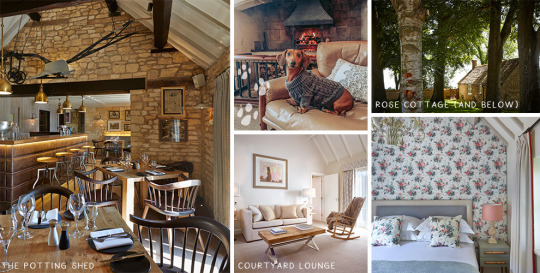
Paws for thought: A charge of £30 per dog per stay applies and includes a cosy dog bed in the room, two dog bowls, some lovely doggie treats, and a dog towel. You are welcome to relax in the bar and lounge with your pooch and you can dine from the bar menu, but note that dogs should not be taken into the main restaurant at The Fish. Dogs are welcome to dine with their owners in The Potting Shed at Dormy House.
Ovolo Hotels, Sydney & Brisbane – Australia & Hong Kong

A colourful collection of contemporary boutique hotels in Australia and Hong Kong, Ovolo Hotels offer an indulgent V.I.Pooch package at Ovolo The Valley Brisbane, Ovolo Woolloomooloo in Sydney, and Ovolo Central Hong Kong. Wake up in one of the trendy, art-filled suites and roll over to your furry friend, who will be provided with their own doggy bed, food and water bowls, and a doggy bag with especially designed toys and treats. With dog-friendly staff on hand to help with late-night walkies (because dogs can feel jet-lagged too!) and recommend local dog-friendly dinner spots, you and your pooch will be made to feel instantly at home with Ovolo Hotels.
The Plymouth South Beach, Miami – USA

Top left image credit: @wtfrenchie
This four-storey luxury hotel is a peach-and-cream Art Deco icon with a contemporary twist, where you’ll never have to leave your best friend behind. Spend days beneath a pastel parasol by the pool or private beach at The Plymouth South Beach with an expertly-crafted cocktail in hand, and your pooch by your side – with personalised Plymouth doggy bowls included in every canine booking. Watch the famous South Beach sunrises as you snuggle up to your pup, before enjoying one of the hotel’s doggy brunches and a sun-soaked walk in the Miami Beach Botanical Gardens or the Collins Park, located just around the corner from this Art Moderne masterpiece.
Kristiania Lech, Lech am Arlberg – Austria

An exquisitely decorated Alpine retreat with the feel of a private residence rather than a hotel, Kristiania Lech is just a short walk from the centre of the upmarket ski resort of Lech. Dogs are welcome to stay in every single one of the 29 rooms and suites at Kristiania Lech, so both you and your canine companion can enjoy the original pieces of artwork and spectacular views over the pretty village of Lech and towards the Alps. Warm up with some cuddles after a day on the slopes on the hotel’s sun terrace or Kaminzimmer (fireplace), or ask the resident leisure consultant for the best Alpine walks if you’re looking for more mountain air – the hotel would be more than happy to arrange a picnic in the snow for you and your pup.
Paws for thought: A charge of €45 per dog per day applies – well-behaved dogs are allowed everywhere except the restaurant.
Château La Chenèviere Hotel, Normandy – France

An elegant 18th-century château surrounded by attractive gardens and parkland, Château La Chenevière Hotel combines the feel of an English country house with classical French style. Claiming the Country House Hotel of the Year title at the SLH Awards 2020, every pastel tinted room has a garden view, making it the perfect place to enjoy the countryside charm of Normandy with your chien in tow. Explore the 12 acres of parkland with your pooch, with secluded walled gardens and a heated outdoor swimming pool (which is open from May-September). Or venture outside the hotel on one of the hotel’s bicycles (if your pup is basket-sized!) for a day trip to Omaha Beach or historic Bayeux.
Forestis, the Dolomites – Italy

The South Tyrolean mountainscape is a playground for pups and nature lovers alike, with endless forest trails and snow-dusted scenery surrounding Forestis – a summit-level sanctuary in the UNESCO Dolomites. You and your pooch will be greeted by resident chocolate Labrador, Amadeus, who can show you all the dog-friendly places to rest your paws. Make the most of the surrounding greenery in the summer, and pick up some snowshoes in the colder months to trek through the high altitude wilderness. This is a boutique escape designed to help you switch off and immerse yourself in the regenerative power of nature.
The Nare, Cornwall – UK

Flanked by colourful gardens and overlooking the gentle waves of Gerrans Bay, The Nare has all the exclusivity of a dog-friendly private island. The Nare’s beachside position puts Cornwall’s captivating coast at your feet, and with the newly-kitted out country house boot room courtesy of partners The Original Muckboot Company, guests can borrow a pair of comfortable wellies for strolls along the sandy beach or coastal footpaths. Well-behaved dogs are welcome in all the rooms and gardens at The Nare, with dinner from the dogs’ table d’hôte menu included in the daily dog charge.
Paws for thought: As with all guests at The Nare those with special dietary requirements and desires are well looked after. The dogs’ à la carte menu has a wider choice. Outdoorsy types and working dogs that don’t need to come into the hotel may prefer instead to stay in the working dogs’ kennels on self-catering terms, for which there is no charge.
The Sukhothai Bangkok – Thailand

Experience serenity and relaxation in the heart of the city at The Sukhothai Bangkok. Take your pooch for a stroll in the carefully landscaped hotel gardens, before enjoying a dip in the 25-metre infinity pool. Rooms blend traditional details with contemporary flair – you’ll be cocooned by polished teak and the Thai silks, with large flat-screen TVs and Bose audio systems for a modern interlude.
Paws for thought: A charge of 500 TBH per dog is applied to each stay, and dogs must be kept on a leash at all times when on hotel property (except in your room).
The Adelphi Hotel, Saratoga Springs – USA

When you first walk through the impressive entrance of The Adelphi Hotel, it’s easy to cast yourself back to the old world grace and grandeur of the 19th-century New York social set. Welcoming pets of all sizes for a one time fee of $75, dogs are allowed practically everywhere in The Adelphi – from all guest rooms, the lobby, all common areas to all three of the hotel restaurant patios overlooking Broadway. With especially designed canine amenities, including cosy beds, food and water bowls, leashes and collars, The Adelphi keeps its four-legged family front of mind.
Hotel Lilla Roberts, Helsinki – Finland

With its location and elegant, homely atmosphere, Hotel Lilla Roberts puts you and your pup in prime position for a luxury Helsinki holiday. While away an afternoon in the Art Deco lounge cosied up beside a crackling fire, or ask the hotel staff to point you in the right direction for the best local parks to play fetch, Finnish style – and with over 80 dog-friendly parks and dedicated doggy beaches to choose from, this Scandi city is the paw-fect choice for pooch parents.
Hotel Tannenhof, St. Anton am Arlberg – Austria

Close to pristine, powdery slopes and a picturesque village with traditional Tyrolean lodges and stone farmhouses, historic church and cosy restaurants, Hotel Tannenhof is set within a true winter wonderland. You and your pup will be given a warm welcome by resident black Labradors Emma and Tommy, before settling in to one of just seven elegant, wood-panelled suites. Cuddle up on the hotel’s custom-made beds, or have a post-ski snooze beside one of the open fireplaces.
Hôtel Crillon le Brave, Provence – France

Left image credit: @victoria_steiner
A quintessentially French bolthole that fuses the charms of a 17th-century hamlet with contemporary luxury, Hôtel Crillon le Brave is simply Provençal perfection. The hotel’s nine stone houses possess all the charm of French countryside living, with terracotta tiles, colourful throws and handpicked antique furniture. If you can bring yourself to leave this hilltop hideaway, take a tour of the nearby vineyards and wineries or wander the fragrant lavender fields of Sault.
Paws for thought: Be sure to book one of the Prestige Rooms if you’re planning to travel with your pooch, as pet-friendly rooms must be requested in advance. Small dogs (weighing under 10kg) are welcome to stay at Hôtel Crillon le Brave for a charge of €30 per night.
The Nimb, Copenhagen – Denmark
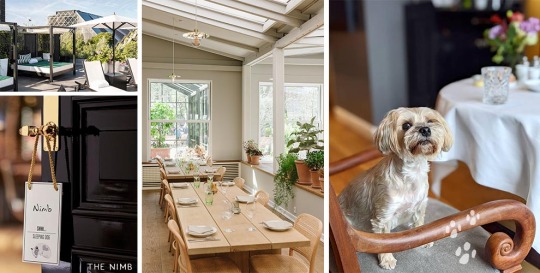
A Moorish-styled palace with a striking Venetian marble façade, all rooms but one at The Nimb have a log fire and view of the Tivoli Gardens. Dogs are welcomed with a hamper of goodies, including toys, turndown treats, luxury bedding, food and water bowls, and a ‘Do Not Disturb/Dog Sleeping’ card. A whole team of doggy dedicated staff are on hand at The Nimb, from dog sitters and walkers, to groomers and a veterinary service, your four-legged friends will hardly need to lift a paw.
Paws for thought: Dogs are not allowed in Tivoli Gardens (except for the annual Dog’s Day in June). Dogs are also not allowed in The Nimb’s restaurants, so be sure to request a pet sitter at least 24 hours in advance.
Hacienda Zorita Wine Hotel & Organic Farm, Salamanca – Spain
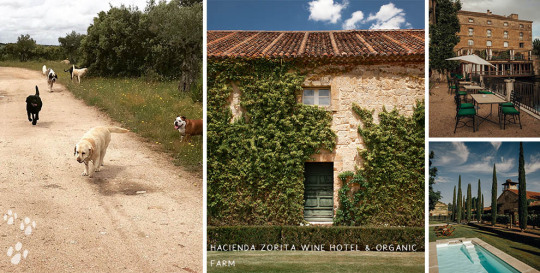
A former monastery overlooking the River Tormes, Hacienda Zorita Wine Hotel & Organic Farm is a magnificent wine resort with an impressive history that dates back to the 14th century. Look out for the working sheep dogs on the nearby farm, just a 10-minute trip from Hacienda Zorita where guests can enjoy cheese tasting and an authentic countryside meal experience. Therre are plenty of vineyard walks to enjoy with your canine companion, before indulging in some of Hacienda Zorita’s specialities, including extra virgin olive oil, local cheese and pata negra produced on the estate.
Ashdown Park Hotel & Country Club, East Sussex – UK

A listed 19th-century mansion set in 186 acres of landscaped parkland, Ashdown Park Hotel & Country Club puts the natural beauty of Ashdown Forest at your feet. Book one of the dog-friendly Fairway Junior Suites, with French doors that open directly out onto the parkland, complete with a private terrace and outdoor furniture. Four-legged guests at Ashdown Park can expect the royal treatment, with their own dog basket, blanket and bowls provided along with dinner and a goodie bag from Arden Grange, a family-run business that has been developing superior, premium food for animals since 1996. Be sure to ask the concierge for a map of nearby dog walking trails, along with their recommendations for dog-friendly pubs in the area.
Paws for thought: A supplementary charge of £30 per dog, per room, will be charged in addition to the room rates. Dogs are regrettably not permitted in the Main House.
Villa La Madonna, Piedmont – Italy

Verdant hills, vineyards, and terracotta roofs – Villa La Madonna overlooks the Bormida Valley in Piedmont, north-western Italy where guests are guaranteed to get a taste for rural life. Run by Swedish couple Helen and Mikael (with their adorable dog Stella), your pup will keep good canine company at Villa La Madonna, which is also the seasonal home to some truffle hunting hounds in the autumn months. If you can tear yourself away, the Alps are only two hours to the north, and the Italian Riviera one hour to the south – with plenty of picturesque walks for you and your cane to enjoy.
Crossbasket Castle, High Blantyre – Scotland
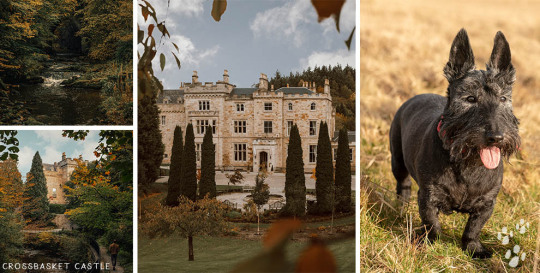
Steeped in history, Crossbasket Castle is a landmark Scottish retreat. Michelin-star chef Albert Roux has created a special menu for man’s best friend, featuring a a selection of salmon, mackerel, spinach and brown rice risotto, turkey and sweet potato stew and meatloaf with chicken jelly. Each item on the ‘dog’s dinner’ costs £10.50 and is available to order via room service, so you can treat yourself to a cosy night in. If you need to walk off all the night’s indulgence, the castle grounds include a large woodland area, extensive nature walks and a beautiful stretch of river with majestic waterfalls.
We have plenty more paw-fect places to choose from, just look out for our pet-friendly icon under the key features of our hotel pages!
The post 20 of the world’s most stylish dog-friendly hotels appeared first on Small Luxury Hotels.
from Small Luxury Hotels https://ift.tt/3lSTEkg Publish First on
1 note
·
View note
Text
World War I (Part 44): Verdun Ends
By May, the French had suffered 133,000 casualties; the Germans 120,000. Germany was still attacking towards Le Mort Homme, and gradually moving up the slopes. At one point, they captured part of the crest, but were unable to keep their hold on it.
General Max von Gallwitz was a capable artillery commander, and had taken part in the conquest of Serbia. Now he arrived to help the Germans, and took command of the west bank. He decided that Le Mort Homme had to be taken, but in order to do that they would first have to clear the guns on an adjacent ridge called Côte 34 – these guns were protecting LMH.
So he ordered over 500 heavy guns along one mile (about 1.6km) of front – a concentration of firepower even greater than their earlier Verdun attacks. On May 3rd, they opened fire. This was the usual practice, in order to blow away the French defences so their own infantry could advance with little opposition. However, it wasn't as successful as they wanted.
The opening barrage lasted through the night & day of May 3rd, and then the day of May 4th. Thousands of French were killed, and many buried alive. Those who survived cowered in their bunkers and trenches, without food or water (as it wasn't able to be got through to them). The French defenders weren't wiped out, and the survivors didn't flee.
But Germany eventually managed to take Côte 304, after three days of close hand-to-hand fighting. Because of the terrible smell of 10,000 rotting French corpses on the ridge, those who took it were given double tobacco rations. However, LMH's guns were still in action, and they still had to take that ridge. They were ordered to continue onwards.
On May 8th – before the Germans had even had a chance to celebrate their victory – Fort Douaumont suddenly blew up. There had been complaints that the ammo wasn't being handled properly while being moved in and out of the fort. The evidence suggests that a group of Bavarian soldiers sheltering inside the fort had opened up a hand grenade to get a few thimblefuls of explosive out, to use for heating their coffee up. This caused a fire, which ignited a cache of grenades, which set off the fuel tanks of some flamethrowers – and these started a chain reaction among stacked artillery shells.
About 650 German soldiers were killed in the explosion (however, the fort was not entirely destroyed). When the survivors emerged, their faces were blackened. The German soldiers outside had no idea what had happened – they assumed that these survivors were Entente colonial units (from Africa) who had overrun the fort, and immediately shot them.
On May 13th, the German 5th Army staff met at the Crown Prince's headquarters. They were there to discuss an east bank offensive that was supposed to have been launched by now, but had been delayed by a) weather, b) Nivelle & Mangin's constant attacks, and c) artillery fire from Le Mort Homme.
The CP had given up on Verdun, and urged Falkenhayn & the kaiser to call the whole campaign off. Knobelsdorf (his Chief of Staff & mentor since August 1914) had been his tactics tutor before the war, and he was certain that they could still prevail. He and Falkenhayn were optimistic partially because of the incorrect reports that by now the French had suffered over 200,000 casualties. (The French had similarly incorrect reports of German casualties.)
But at the meeting, Knobelsdorf agreed with the CP, and promised to visit Falkenhayn that day and try and persuade him to stop. But he did the opposite – he told Falkenhayn that France's guns at LMH would soon be cleared, and then they could safely resume the east bank offensive. He probably found it easy to get Falkenhayn to agree. In fact, the leading figures opposing the Verdun campaign were those who had opposed his appointment to Commander-in-Chief after Moltke was dismissed.
When the CP learned what Knobelsdorf had done, there was really nothing he could do. He was heir to the throne, but his father had been disdainful to him all his life. He had spent the last 1.5 years as an army commander, and had gradually become confident to stand up to Knobelsdorf; however, his father still kept him at a distance.
Falkenhayn encouraged Knobelsdorf to capture Verdun before the Entente offensive along the Somme that Joffre and the British were obviously preparing for, could begin. The CP said that, “If Main Headquarters order it, I must not disobey, but I will not do it on my own responsibility.”
The Battle of Asiago
But meanwhile, the Austrians were causing problems again.
During his career, Franz Conrad had watched the new Kingdom of Italy take Austro-Hungarian territory to its north. He hated the Italians, and was contemptuous of them – he called them “Dago dogs”. Since late 1915, he'd been pestering Falkenhayn to help him launch an offensive southwards out of the Alps towards Italy. If successful, he could destroy Italy's ability to fight, and regain the northern Italian plain. But Falkenhayn's armies were outnumbered everywhere, and he was focused on Verdun. He brushed Conrad's pestering aside, saying that the suggested campaign might please the Viennese government, but wouldn't help them win the war.
Falkenhayn was a rather cold person, and had no close friends even among his fellow Junkers. He disliked & distrusted Conrad, and when he rejected his suggestion of the Italian offensive, he did so with unncessary curtness. He'd kept the Verdun campaign secret from Conrad – it had been more of a surprise to the Austrians to the French. It wasn't just Conrad he'd kept it a secret from, though – even the commanders of the German armies south & west of Verdun hadn't known exactly what was being prepared – but Conrad was still greatly offended. And he decided to launch the offensive anyway, without telling the Germans.
Four battles had already taken place at the Isonzo, in northern Italy (i.e. on the Isonzo River). Conrad decided to attack further west, in the mountainous Trentino region (north-east of Lake Garda).

Trento = Trentino.
He sent over 12 of his best divisions just north of the passes leading into Italy. From there, they could attack Lombardy's farmlands and cities (this was land that Conrad believed truly belonged to Vienna). Once they'd reached open country, they could then swing around and take the Italians at the Isonzo in the rear.
Six of these divisions were taken from Galicia, as Conrad believed there was no chance of major trouble there. In late 1915, they'd been victorious over the Russians there (although mainly because of German troops that Falkenhayn had sent them from Verdun). Also, the Russians' numerical advantage was the smallest there of all the places on the Eastern Front. If Conrad knew of Brusilov's recent appointment as commander of the south-west front, he wouldn't have thought it was important. He got approval from the Habsburg archduke (his official Commander-in-Chief), and took personal command of operations in Italy.
Conrad was not a good choice to be in charge of operations. He was completely unrealistic, and was always deanding his troops to do things that were beyond their abilities. He expected them to fight and defeat enemies even when spectacularly outnumbered. His campaigns would begin brilliantly, with huge gains, and then fail & end in disaster (unless the Germans helped him out).
In 1915, Austria suffered over 200 million casualties, including 770,000 taken prisoner. By early 1916, the Austro-Hungarian army had lost so many troops that they were basically unable to carry out independent operations. This may have been one of Conrad's reasons for wanting to invade Italy – he may have known that he couldn't possibly achieve anything against Russia.
For the Battle of Asiago, Conrad's headquarters stayed at Silesia – about 965km from the battle – he didn't even bother to pay a visit to the region they were about to attack from. He was happily settled there with a new wife and the comforts of a pre-war aristocratic life. From his headquarters, he sent out detailed instructions, telling his commanders in the field exactly what the divisions at Trentino were to do. He made marks on maps, showing the objectives each division had to reach each day, and that was that. He ignored any questions or suggestions; and no deviation was allowed, even if it was far more sensible and achieved the same outcome – for example, if a division was ordered to climb over a mountain crest that was covered in deep snow, and going downhill through a valley would be easier and quicker, they still had to climb the mountain crest. The Chief of Staff of the army group being formed at Trentino asked for permission to travel to Conrad's headquarters and talk with him, but was refused it. Conrad wanted no discussion, and would not listen to others' ideas.
He wanted to begin in April (almost immediately) but the attempts to do so failed – his troops and supply trains couldn't get into position so quickly at that time of year, and hundreds of them either froze to death, or were buried in avalanches, in trying.
They attacked on May 15th – 157,000 Austrians against 117,000 Italians, and they easily pushed the enemy back. For the first three weeks of the campaign, they made good progress, sweeping southwards on a broad front. By the end of May, they'd taken 400,000 prisoners, and 380 guns. The King of Italy begged the tsar for assistance.
Other Events
Everything seemed to be going well for the Central Powers. North of Paris, the Germans carried out an attack that was mostly for the purpose of disrupting French & British preparations for their summer offensive. They managed to drive the British out of their positions whence they were planning to take the Vimy Ridge (a massive strongpoint dominating the Artois plain to the west). The French had taken great casualties in establishing those positions, and had handed them over to the British in March. They had been assumed to be secure, and now they had lost them. Joffre was shocked, and Haig was humiliated. But Haig couldn't launch a counterattack, because so many of his troops & resources were being concentrated at the Somme.
On May 22nd, Mangin launched an attack at Fort Douaumont. He'd spent the previous 5 days firing 1000 tonnes of explosives from 300 heavy guns, at the quarter of a spare mile (about 0.65km2) centred on the fort. When the attack began, the French broke into the fort's inner chambers. The Germans regrouped, and days of terrible close-quarters underground fighting followed, with the French eventually being driven out.
The fighting here was hideous, and Mangin was heedless of what was realistic. So, too, were many of the troops. A French staff officer would say later, “Even the wounded refuse to abandon the struggle. As though possessed by devils, they fight on until they fall senseless from loss of blood. A surgeon in a front-line post told me that, in a redoubt at a southern part of the fort, of 200 French dead, fully half had more than two wounds. Those he was able to treat seemed utterly insane. They kept shouting war cries and their eyes blazed, and, strangest of all, they appeared indifferent to pain. At one moment anaesthetics ran out owing to the impossibility of bringing forward fresh supplies through the bombardment. Arms, even legs, were amputated without a groan, and even afterward the men seemed not to have felt the shock. They asked for a cigarette or inquired how the battle was going.”
Over 5,500 French troops had been killed or wounded, and 130 officers. This failure was so great, and the casualties so high, that Mangin was (fortunately) dismissed. Pétain said, “You did your duty and I cannot blame you. You would not be the man you are if you had not acted in the way you did.” Meanwhile, the Germans were forcing their way closer to Le Mort Homme, with fighting of almost equal intensity.
In Russia, General Mikhail Alexeyev was still the tsar's Chief of Staff, even though he'd been Polivanov's partner in reform. However, because he was away at army headquarters, and far from the intrigues at Petrograd, he had managed to keep his position. He was now asking his sector commanders when they could attack next. Evert, as usual, said that he could do nothing. Brusilov, however, said that his preparations were basically complete, and that his four armies were ready to go. (Even Alexeyev was surprised by this.) The decision was made for Brusilov to attack at the beginning of June. Evert's much larger forces were directly north of Brusilov's, and he was persuaded to attack on June 13th. However, he was reluctant, even though he had a million troops, and 2/3 of Russia's heavy artillery.
On May 26th, Joffre met with Haig at Pétain's insistence. He asked Haig to move the date of the planned Somme offensive from mid-August to earlier. Haig didn't like the idea, but Joffre told him that if he waited another 2.5 months, “the French army could cease to exist.” So Haig agreed.
Only once in the Great War did the the dreadnoughts of British Grand Fleet and Germany's High Seas Fleet fight each other, and took place from May 31st to June 1st. The German commander had worked out a plan to lure Britain's battle cruiser force southwards away from their dreadnoughts' protection, but the British had intercepted and decoded his radio messages, so they knew what he was planning. On May 30th, a huge German force steamed into the North Sea – 16 dreadnoughts, 6 older battleships, 5 battle cruisers, 11 light cruisers, and 61 destroyers. The British moved towards them with 150 ships, outnumbering him with every type of ship.
The Battle of Jutland ensued – the greatest naval battle in history, until WW2. (Jutland is the peninsula that comprises Denmark and part of northern Germany; this battle took place west of it.) The battle had five stages, and the fleets separated, converged, and changed directions over and over. Both sides made serious mistakes, and had moments of great ingenuity.
Germany lost 1 battleship, 1 battle cruiser, 4 light cruisers, 5 destroyers, and 2,500 men. They withdrew to their home ports, and stayed there for the rest of the Great War.
Britain had greater losses – 3 battle cruisers, 3 cruisers, 8 destroyers, and 6,200 men. The Battle of Jutland was overall a draw, and changed nothing in terms of strategy (although the British kept control of the North Sea). John Jellicoe (the British fleet commander) returned home a hero, and the public were told it was a glorious victory. However, the Admiralty knew this was not true.
Around about the same time, Germany finally captured Le Mort Homme at Verdun. Now, they could go on the defensive on the west bank, and begin the great east bank offensive that Knobelsdorf claimed would take them into Verdun. By June 1st, the main force for this east bank offensive was still being organized & put into place. German units made an exploratory attack up the final approaches towards Fort Vaux. Fort Vaux was smaller than Fort Douaumont (but still a strong fort), and was the final major strongpoint between the Germans and the city of Verdun. Everything seemed to be falling into place for them. They were about to capture Verdun.
In Italy, the Austrians had advanced out of the Alps and were in open country; they were positioned to encircle the retreating Italians. In Flanders (Belgium), the Germans captured Mont Sorel, a piece of high ground about 4km south of what used to be Ypres.
The Brusilov Offensive
On June 4th, Brusilov ordered his guns to open fire. His preparations had been extensive, and unconventional in terms of Great War tactics up until now. He focused on taking the Austrians by surprise on such a broad front that they wouldn't be able to react effectively. He used air & ground reconnaissance to a degree greater than anything the Russian military had used so far, and identified the enemy's weak points with it. He made great use of deception tactics, even painting imaginary trenches on the ground behind his lines.
His opening barrage lasted only a day. Its purpose wasn't (as was usual) to destroy the Austrian defences, but to a) neutralize their artillery and b) clear away their barbed wire, and it succeeded on both points. The Russian infantry attacked on June 5th, and the Austrians were by then in confusion.
The Russian advance was on a front over 400km wide, and the Austrians were not expecting that. Brusilov wanted to attack everywhere, and that they would definitely find some holes somewhere by doing that. Therefore, he'd moved his small reserve forces close enough to the front that they could exploit these opportunities as soon as they found them.
Brusilov had ignored the usual tactics of the Great War – a short bombardment; his refusal to concentrate his troops on a narrow sector of front (even though Alexeyev had asked him to do so); attacking forces numerically equal to his own. The result was a huge success. The Austro-Hungarian Fourth Army fell apart – 71,000 were killed, wounded or captured (and this was over half their troops!) The Austro-Hungarian Seventh Army lost 133,000 men, even worse than the Fourth. After three days, the Russians had taken 300,000 prisoners. Before a week had passed, over half the Austrian defenders had become casualties.
The more trusted Austrian units had been sent to Italy for Conrad's Trentino campaign, and most of those remaining were Slavs. They fled back towards the Carpathians. They had no reserves (due to Conrad's taking troops for his Trentino campaign), so they couldn't restore their lines. And worse, their senior commanders weren't even there – they were at a party with Conrad, at a Habsburg castle in Teschen.
Archduke Frederick was Emperor Franz Joseph's nephew, and June 4th was his birthday. (He was also titular Commander-in-Chief of all the Austro-Hungarian armies – a ceremonial post.) Conrad was certain that his conquest of Italy would give the empire much to celebrate, and he attended the party with senior members of his own staff, and also generals from Galicia. During the festivities, the news arrived that the Russians had suddenly started attacking on their southern front. Conrad dismissed the news, and assured everyone that there was no reason for concern.
Two days later, Austria's success in Italy was suddenly reversed. General Luigi Cadorna was the Italian Commander-in-Chief, and he took troops from his fifth Isonzo offensive (which was short and unsuccessful) to counterattack the Austrians who had advanced from Trentino. They succeeded, and Conrad's Italian campaign came to an end.
Back in Galicia, Brusilov's forces had wrecked the Austro-Hungarian forces on their flanks, and were ready to encircle the centre. But he needed more manpower to do this. Evert had more than enough in the north-west, but he didn't attack or send any of his divisions to join Brusilov's forces. He was supposed to attack on June 13th, as had been agreed, but did nothing.
Max Hoffmann would write later that if Evert had attacked, “the crisis would probably have developed into the complete defeat of the Austro-Hungarian Army.” The Germans opposite Evert's forces were free to move southwards against Brusilov, and they did so.
But even so, Austria-Hungary seemed about to be defeated. Conrad was finally very worried, and travelled by train to Berlin, where he reported his failure in Italy and begged Falkenhayn for help. Falkenhayn promised nothing, and was even colder than before. However, the German Army of the South was still in Galicia, and they attacked the Russian Eighth Army where it had penetrated deepest into the Austrians' lines. Brusilov's troops were exhausted, and the supply system was (as usual) failing. He was forced to halt in order to regroup.
Nonetheless, he had had great success. He'd destroyed two Austro-Hungarian armies, and dealt great damage to others. The Austro-Hungarian army's morale was already low, and now it was even worse. He'd captured 100,000's of prisoners, including thousands of officers; he'd also taken hundreds of machine-guns and artillery pieces. The ground the Russians had taken wasn't much compared to how vast the eastern theatre was, but with the Austrians in major confusion, there were rich opportunities for further conquests. Every promise the Russians had made to their allies had now been redeemed. And his actions had prevented the Austrians from reinforcing the Trentino campaign. Finally, Russian morale had been given a huge boost.
Verdun
Back on the Wetern Front, the Germans seemed about to break into Verdun. But Brusilov's success had complicated Falkenhayn's manpower problems yet again. Falkenhayn had been planning a pre-emptive attack on the Somme (as he knew the Entente were going to attack there soon), but now he couldn't do that. Also, he had to help Conrad. So he began to transfer troops away from the Western Front – eventually 18 divisions in total.
Brusilov, too, was in a difficult position. He'd lost 300,000 men, used up a huge amount of ammunition, and other supplies were exhausted. He had no hope of support from the war ministry, as it was headed by an elderly general who'd been chosen for the position because of his loyalty to the Romanovs. The Russian military administration was barely functioning at all (apart from the benefits to profiteers). Russia's collapse and subsequent revolution was very much a direct result of Petrograd's inability to resupply Brusilov, and Evert's refusal to support him.
However, Ludendorff was also refusing to sent troops from his base in the north to Verdun or Galicia. So that counterbalanced Brusilov's problems somewhat. (Ludendorff's troops were facing Russian armies that outnumbered him, and had to be expected to attack, so his refusal was understandable.)
These four fronts – Verdun, the Somme, Galicia and Italy – were all affecting each other, and events on all of them began to interlock. The Italian government fell due to controversy over how Cardona had handled the Trentino offensive. The French National Assembly was forced to meet in secret session for the first time in the war, as the opposition demanded answers about Joffre's strategy.
Many things were happening during the month of June. A British cruiser bound for Russia hit a mine near the Scottish coast, killing Kitchener, who had been on board. An Arab revolt (with British support) was breaking out in the deserts of the Ottoman Empire's southern region. At Salonika, the French General Maurice Sarrail was nearly ready to take his troops northwards in to the Balkans.
Conrad's armies were barely functional, yet he suggested to Falkenhayn that they launch a huge offensive that would surround and destroy Brusilov's army group. The others laughed at him; even his Austrian colleagues were beginning to despise him.
After days of terrible fighting, Fort Vaux finally surrendered to the Germans. Major Sylvain Eugène Raynal was the French commander of the fort, and he surrendered only because his men were dying of thirst. The German Crown Prince was so impressed by Raynal that he honoured him personally, giving him a sword to replace the one he'd lost in battle. In return, Major Raynal said that the CP was “not the monkey that our caricaturists have made him out to be.” Now there was only one small strongpoint between the Germans and the city of Verdun – Fort Souville.
The last of Falkenhayn's reserves – 30,000 men – launched an attack on a front 4.8km wide. If they took Fort Souville, they would be only 4km from Verdun's central citadel. Knobelsdorf was so confident that he invited the kaiser to join him.
The traditional artillery barrage was carried out on June 22nd. It ended with new shells containing phosgene, a new type of gas that killed everything, including insects and plants.
At 5am on June 23rd, the German infantry attacked. They broke through the French centre. Pétain learned of this, and decided they would have to abandon the east bank, in order to stop the Germans from capturing hundreds of artillery pieces. In the streets of Verdun, trenches were being dug, and barricades were being built.
But the Germans' narrow front of 4.8km was a bad decision – they were exposed to heavy fire on both flanks, and aircraft strafed them from above. The forward edge of their infantry advance managed to get within 1.2km of the crest of the last ridge before Verdun. But they couldn't get any further. After another two days of terrible fighting, the Germans had to give up.
This was mainly because of a shortage of manpower. Falkenhayn had been receiving multiple telegrams about the emergency in the south-east (the eastern front), and decided that he had to pull divisions out of Verdun and send them by train to Galicia. If only one of these divisions had been added to the fight at Souville, they might have taken Verdun. But thanks to Brusilov, this was not possible.
At the climax of the battle, the French seemed to have no chance of holding on. Joffre sent four divisions to Verdun that he'd been saving for the Somme. Conrad moved 8 divisions from Italy to Galicia. Premier Aristide Briand of France travelled to Haig's headquarters and begged him to begin the Somme offensive. Haig began the bombardment that afternoon. When Pétain phoned Joffre to announce that he was removing his artillery from the east bank, Joffre ordered him to stand fast. Pétain did so, and the situation got better very quickly.
The Battle of Verdun was finally over. But it was a pointless victory – Verdun would have given little to the Germans if they'd won it, and the French had held onto something that was of no strategic value. Falkenhayn removed still more troops and sent them east. And the Battle of the Somme was just beginning.
#book: a world undone#history#military history#ww1#battle of verdun#battle of asiago#battle of the somme#battle of jutland#brusilov offensive#russian revolution#arab revolt#france#poland#galicia#max von gallwitz#crown prince wilhelm#erich von falkenhayn#konstantin schmidt von knobelsdorf#franz conrad#alexei brusilov#joseph joffre#douglas haig#charles mangin#philippe pétain#mikhail alexeyev#alexei evert#john jellicoe#luigi cadorna#erich ludendorff#maurice sarrail
2 notes
·
View notes
Photo

Treaty of Verdun, 843.
The Treaty of Verdun, signed in August 843, was the first of the treaties that divided the Carolingian Empire into three kingdoms among the three surviving sons of Louis the Pious, who was the son of Charlemagne. The treaty, signed in Verdun-sur-Meuse, ended the three-year Carolingian Civil War.
Following Charlemagne's death, Louis was made ruler of the Carolingian empire. During his reign, he divided the empire so that each of his sons could rule over their own kingdom under the greater rule of their father. Lothair I was given the title of emperor but because of several re-divisions by his father and the resulting revolts, he became much less powerful. When Louis the Pious died in 840, his eldest son, Lothair I, claimed overlordship over the entirety of his father's kingdom in an attempt to reclaim the power he had at the beginning of his reign as emperor. He also supported his nephew, Pepin II's claim to Aquitaine, a large province in the west of the Frankish realm. Lothair's brother, Louis the German, and his half-brother Charles the Bald refused to acknowledge Lothair's suzerainty and declared war against him. After a bloody civil war, they defeated Lothair at the Battle of Fontenay in 841 and sealed their alliance in 842 with the Oaths of Strasbourg which declared Lothair unfit for the imperial throne, after which he became willing to negotiate a settlement.
Each of the three brothers was already established in one kingdom: Lothair in Italy, Louis the German in Bavaria, and Charles the Bald in Aquitaine. In the settlement, Lothair (who had been named co-emperor in 817) retained his title as emperor and:
Lothair received Middle Francia, the central portion of the empire. His domain later became the Low Countries, Lorraine, Alsace, Burgundy, Provence, and the Kingdom of Italy (which covered the northern half of the Italian Peninsula). He also received the two imperial cities, Aachen and Rome, as well as the imperial title, but it conferred only nominal overlordship of his brothers' lands.
Louis the German received the eastern portion of the empire. He was guaranteed the kingship of all lands to the east of the Rhine and to the north and east of Italy, which was called East Francia. It eventually became the high medieval kingdom of Germany, the largest component of the Holy Roman Empire.
Charles the Bald received the western portion, which later became France. Pepin II was granted the kingdom of Aquitaine, but only under the authority of Charles. Charles received all lands west of the Rhône, called West Francia.
Legacy
The division reflected an adherence to the old Frankish custom of partible or divisible inheritance amongst a ruler's sons, rather than primogeniture (i.e., inheritance by the eldest son) which would soon be adopted by both Frankish kingdoms.
The division of the Frankish realm by the Treaty of Verdun, carried out without any regard to linguistic and cultural continuities, resulted in conflicts in Western Europe until the 20th century. Since the Middle Frankish Kingdom combined lengthy and vulnerable land borders with poor internal communications as it was severed by the Alps, it was not a viable entity and soon fragmented. This made it difficult for a single ruler to reassemble Charlemagne's empire. Only Charles the Fat achieved this briefly.
In 855, the northern section became fragile Lotharingia, which became disputed by the more powerful states that evolved out of West Francia (i.e., France) and East Francia (i.e., Germany). Generations of kings of France and Germany were unable to establish a firm rule over Lothair’s kingdom. While the north of Lotharingia was then composed of independent countries, the southern third of Lotharingia, Alsace-Lorraine, was traded back and forth between France and Germany from the 18th to the 20th century. In 1766, it passed to France after the death of Stanislaw Leszcyznski, who had acquired the region from the German Habsburgs by the Treaty of Vienna (1738) ending the War of Polish Succession (1733-1738). In 1871, Alsace-Lorraine became German, after the victory of Prussia and its German allies over the French in the Franco-Prussian War (1870-1871). In 1919, it became French again by the Treaty of Versailles (1919), following the French victory over the Germans in World War I (1914-1918). In 1940, Germany reannexed Alsace-Lorraine following Germany's successful invasion of France. Finally, in 1945, after World War II (1939-1945), Alsace-Lorraine was solidified as French territory, which it remains to this day, more than a thousand years after the Treaty of Verdun. The collapse of the Middle Frankish Kingdom also compounded the disunity of the Italian Peninsula, which persisted into the 19th century.
After Lothair's death in 855, Upper and Lower Burgundy (Arles and Provence) passed to his third son, Charles of Provence, and the remaining territory north of the Alps to his second son, Lothair II, after whom the hitherto nameless territory was called Lotharingia. It would then become modern Lorraine. Lothair's eldest son, Louis II, inherited Italy and his father's claim to the Imperial throne.
194 notes
·
View notes
Link

By Deborah Huso
6 March 2019
Pristina, Kosovo has the distinction of often being dismissed as one of Europe’s ugliest capitals. It’s certainly a place I never thought I’d visit. My only reference point of the place was from some dark, distant corner of my mind, remembering tragic news coverage of the Kosovo War in the late 1990s after years of ethnic cleansing that displaced some 750,000 ethnic Albanians. For years, Kosovo’s ethnic Albanian majority had vied for control of the region against Serbs, who, despite only making up 10% of the population, viewed Kosovo as the cradle of their cultural identity.
Kosovars declared their independence from Serbia in February 2008. Ten years later, I suddenly found myself in this dishevelled mishmash of a city. Look one way, and minarets of centuries-old mosques reach towards the heavens and newly commissioned statues of domestic and foreign heroes stand tall. Look another way, and once-prestigious landmarks like the state-owned Grand Hotel now sit largely vacant with broken windows. “I don’t think it is the worst hotel in the world,” Kosovo’s president, Hashim Thaçi, said to a reporter from The New York Times. “But that is because the world is very big.”
View image of Pristina, Kosovo, is often dismissed as Europe’s ugliest capital (Credit: Credit: Deborah Huso)
Yet here I was on a warm summer evening, picking my way along a back alley several blocks south of the Cathedral of St Mother Teresa near Bill Clinton and George Bush boulevards. I’d only come to Pristina to pass through on my way out of the Balkans after a 10-day hike in the Albanian Alps. After checking into a rental flat with no running water (a neighbourhood-wide issue that my host could not explain), I set out on my own, determined to make the most of my short two-day stay.
You may also be interested in: • The country with a new (old) name • ‘I’m from a country that no longer exists’ • The tiny ‘nation’ you’ve never heard of
With its square-ish concrete, Communist-style buildings and dusty streets, it quickly became apparent why Pristina gets a bad rap. Lonely Planet called it “not the most aesthetically pleasing city you’ll ever come across,” and The Boston Globe once said, “This Balkan city is perhaps the ugliest and most fun capital in in Europe.” But given its recent bloody and politically tumultuous past, comparing Pristina to a place like Paris or Rome isn’t exactly fair. After all, in the last century alone, warfare in the Balkans has led Kosovo to be ruled by the Ottoman Empire, the kingdom of Serbia, Yugoslavia, even Italy (as part of Greater Albania during World War Two) and Serbia again.
Today, despite boasting some of the oldest mosques in Europe, much of Pristina’s once-proud Ottoman architecture has been replaced by communist structures from its Yugoslavian days. In fact, my one goal while in town was to see the most notorious of these communist-era constructions: the National Library of Kosovo, a massive jumble of concrete blocks that has been called one of the world’s ugliest buildings by Virtual Tourist. Opened in 1982, the National Library is Pristina’s most striking work of architecture: a Brutalist behemoth whose fence-like metal exterior is suggestive of a jail.
However, as I pushed through the glass doors hidden beneath the library’s metal facade, I found that there is a distinctive beauty in this building, with its 99 domes and large windows. Both its unusual exterior and main hall’s mosaic marble stone floor, bathed in a wide swath of natural light from the building’s largest dome, suggest a link to Pristina’s lost Byzantine and Islamic architecture.
View image of With its Brutalist architecture, the National Library of Kosovo has been called one of the ugliest buildings in the world (Credit: Credit: Deborah Huso)
But then, mere blocks away, is the fresh white spire of the Cathedral of St Mother Teresa, completed in 2017, 14 years after Pope John Paul II beatified its ethnic Albanian namesake. The soaring 76m structure is an ironic site here – both because Vatican City does not recognise Kosovo’s sovereignty and because 90% of Kosovo’s population is Muslim.
There is some poetic justice. Before the Ottoman Empire assumed a centuries-long rule of Kosovo beginning in the 14th Century, most Albanians were Christian. With Turkish rule, the majority converted to Islam to escape taxes levied on Christian subjects. My city guide Bekim Xhemili, curator and ethnologist at the Ethnological Museum of Kosovo, told me that today only 3% of Kosovars are Catholic.
The history of the Cathedral of St Mother Teresa’s construction reflects the desire of Kosovars to put decades of conflict (most of it ethnic rather than religious) behind them. According to Xhemili, Muslims as well as Christians donated funds to the cathedral’s construction, with many of those funds coming from ethnic Albanians living in the United States.
View image of Completed in 2017, Pristina’s Cathedral of St Mother Teresa was paid for by donations from both Christians and Muslims (Credit: Credit: Greg Balfour Evans/Alamy)
But Kosovo’s path to peace and independence has not necessarily led to prosperity. Today, only 114 of the world’s 193 United Nations members recognise Kosovo’s sovereignty, and as Xhemili was quick to point out, much of its economy is supported by money coming in from relatives working in Western Europe. “Without all the money entering Kosovo from outside,” he said, “the economy would fail.” According to Kosovo Central Bank, Kosovars working abroad sent home some 752 million euros in 2015 alone. At the start of 2018, Kosovo’s unemployment rate stood at roughly 27%, and workforce participation by working-age Kosovars (ages 15-64) was a staggeringly low 39%.
You wouldn’t know things were so dire wandering Pristina’s streets, particularly its main pedestrian drag, Bulevardi Nënë Tereza. Filled with cafes and lined with everything from a concrete Spomenik memorial in remembrance of Yugoslavia’s liberation during World War Two to bronze figures painted with US and British flags, the street seemed to be bustling every hour of the day. Parents pushed prams, tourists licked cones of gelato and students rambled from one coffee shop to the next.
In fact, one of the most wonderful things I found about Pristina was its cafe culture. Walk a block or two, and you’ll encounter at least half a dozen cafes, and according to the Gastronomic Society of Pristina, there are more than 100 in a city of just 200,000 people. Like Pristina itself, its cafes reflect a blend of Balkan, European and Middle Eastern influences, with some pouring macchiatos so delicious they’d rival any in Italy, and others specialising in sweet-and-savoury Turkish brews.
Coffee aside, what makes these cafes unique is what they mean to the people who call this tiny landlocked place home. Cafes are a natural entrepreneurial endeavour in an area with few economic prospects – most everyone drinks coffee. They are also a gathering place for government workers, those without employment and young intellectuals. After all, it was in Kosovo’s cafes where the initial planning of its independence movement reportedly began.
View image of According to the Gastronomic Society of Pristina, there are more than 100 cafes in a city of just 200,000 people (Credit: Credit: dpa picture alliance/Alamy)
A five-minute walk from the bustling Bulevardi Nënë Tereza, I came across the NEWBORN monument that celebrates Kosovo’s 11-year independence from Serbia. Every year on their independence day (17 February), Kosovars redecorate the monument with a new look. Some years, its giant letters are tagged with colourful graffiti. Other times, they’re covered with citizens’ signatures. According to an exhibit at the Kosovo Museum, this annual change reflects Kosovo’s ever-evolving quest for identity and symbolises its growth – whether sporting barbed war to emulate breaking free from the political and social slavery of the past or featuring the flags of the nations that have recognised Kosovo’s sovereignty.
Across the street from NEWBORN, I spotted the more tragic Heroinat Memorial, unveiled in 2015 to honour the 20,000 women raped during the Kosovo War of 1998-99. Each pin of the monument represents one of the women, and, resting at different heights, they together reveal the contoured relief of a woman’s face. The monument was especially poignant for me. In the days before arriving in Pristina, I stayed in the homes of ethnic Albanians in Kosovo where I often sat for Turkish coffee with matriarchs who would begin to tell me hushed references about what happened to their friends, sisters and daughters at the hands of Serbian soldiers – bringing life to one of the most tragic and brutal tactics committed by both Serbian forces, and, according to US-based non-profit Human Rights Watch, the Kosovo Liberation Army against Serbian, Albanian and Roma women.
View image of Pristina’s NEWBORN monument celebrates Kosovo’s independence, and every year it’s redecorated (Credit: Credit: Deborah Huso)
It’s perhaps fitting that the road leading forward from a site remembering one of Kosovo’s darkest times is named after former US Secretary of State Madeleine Albright. In fact, even in 2019, many Kosovars’ have something of a love affair with the Clintons, Bushes and other American politicians, who they feel were instrumental in forging Kosovo’s independence.
Kosovars remember the US-led Nato bombings of 1999 that finally freed them from Serbian control and put a stop to war atrocities on both sides. “We love America; we love Bill Clinton,” Xhemili added. “Americans are our heroes.”
Like Pristina itself, sometimes that love isn’t pretty. “We probably have the ugliest Bill Clinton statue in the world,” Pristina mayor Shpend Ahmeti said in an interview with Osservatorio Balcani Caucaso Transeuropa last year. “His wife Hillary inaugurated it, with a face like ‘this does not look like my husband!’.”
View image of Pristina features a number of monuments to and streets named for American politicians, including Bill Clinton (Credit: Credit: Christian Kober 1/Alamy)
And, admittedly, Pristina does not resemble Paris or Rome, either. But I found that if you remember its past and lose yourself in its present, you’ll find a resilient people and young capital eager to write their next chapter. And that is undeniably beautiful.
Join more than three million BBC Travel fans by liking us on Facebook, or follow us on Twitter and Instagram.
If you liked this story, sign up for the weekly bbc.com features newsletter called "If You Only Read 6 Things This Week". A handpicked selection of stories from BBC Future, Culture, Capital and Travel, delivered to your inbox every Friday.
BBC Travel – Adventure Experience
0 notes
Photo

The climate of Italy varies from region to region. In Northern Italy, between two major mountain ranges in Italy; Alps and the Tuscan-Emilian Apennines, there is very cold winters, and very hot summers. Central Italy has a milder climate. Summers are also longer. In Southern Italy, the winters are never cold. Thunderstorms are common in the Northern region, usually happen in early fall. Dry pasta, like spaghetti, is found more in the southern areas since it is easier to dry pasta in a warmer climate. In the north, fresh pastas, like pappardelle, are more popular since it is hard to dry pasta. The food and plants grown are heavily dependent on the water. For example, olive trees grow better in a warmer weather rather than a colder one, southern region. In the south, olive oil is used while in the north, butter and lard are used in place of olive oil. Italy grows a lot of vegetables.
0 notes